Located in Beijing, planning to go out this weekend, which cities within a 2-hour high-speed train ride are worth visiting?
Must recommend Datong.
I went to Datong about three years ago, it takes about 2 hours by high-speed train from Beijing. The tourism resources are much richer than I imagined, and compared to many internet-famous cities, it is more low-key. You can easily spend a weekend of 2 days or add 1-2 more days to fully explore it.
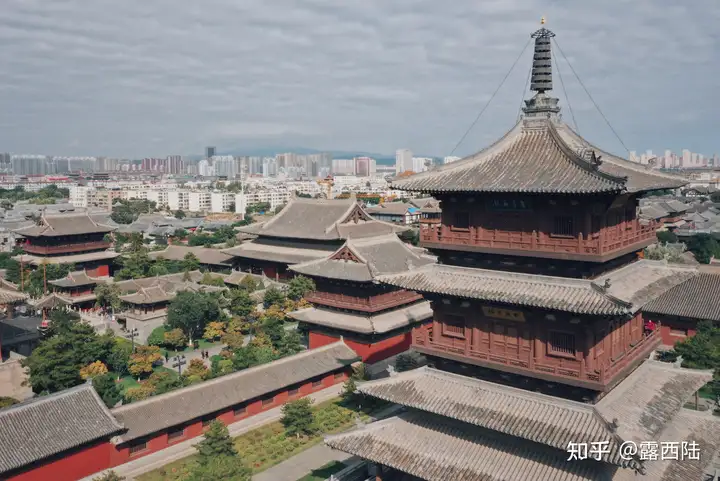
Come and recommend a 4-day 3-night travel itinerary that can be directly copied, and you can adjust it according to your own time and preferences ——
Day 1 Datong Ancient City : Huayan Temple - Daiwang Palace - Ancient City Wall Square
Datong, as the capital of the Northern Wei Dynasty and a secondary capital during the Liao and Jin Dynasties, may not be as famous as the ancient cities of Xi'an and Luoyang, but it still has the aura of a capital city. Unfortunately, most of the buildings in the current Datong ancient city are newly constructed, with only a few ancient structures still preserved.
Huayan Temple
Huayan Temple is a must-see ancient building in Datong's ancient city. The attraction is located in the center of the ancient city, covering a large area. The outer layer consists of newly built 仿古 buildings in recent decades, while the true treasures are the two main halls inside, Shang Huayan Temple and Xia Huayan Temple.
Note: "仿古" means "imitation ancient" or "ancient-style" in English, but it is kept in Chinese as it is a specific term often used in the context of Chinese architecture.
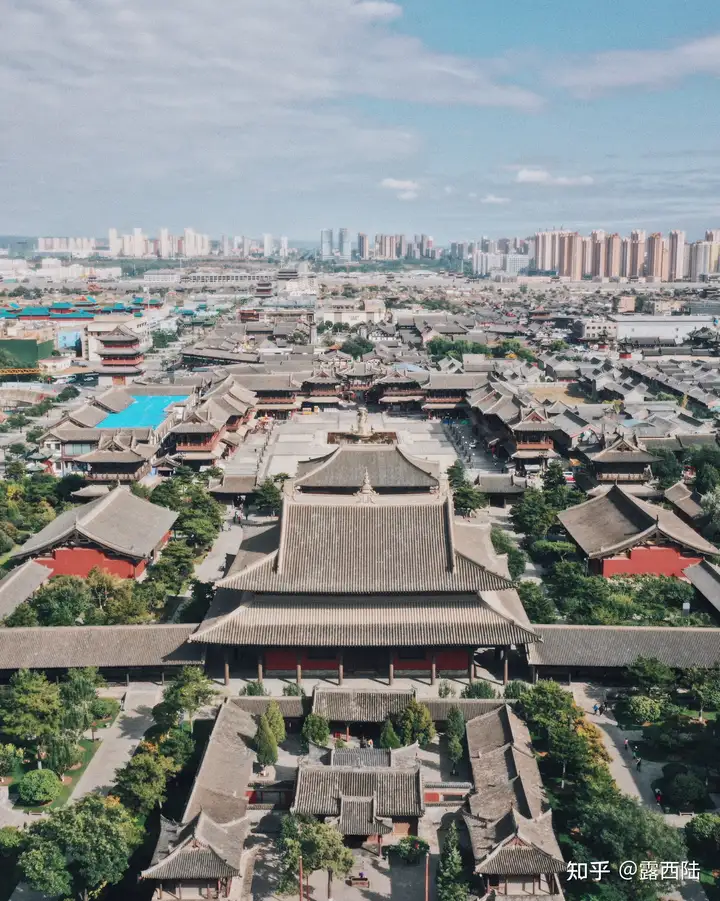
Shang Huayan Temple is a Liao Dynasty architectural structure, and it is also one of the largest existing Daxiongbao Hall in terms of area in China. The rulers of the Liao Dynasty were the Khitan people, whose buildings were very spacious but not tall, with proportions entirely different from those of the central plains' halls.
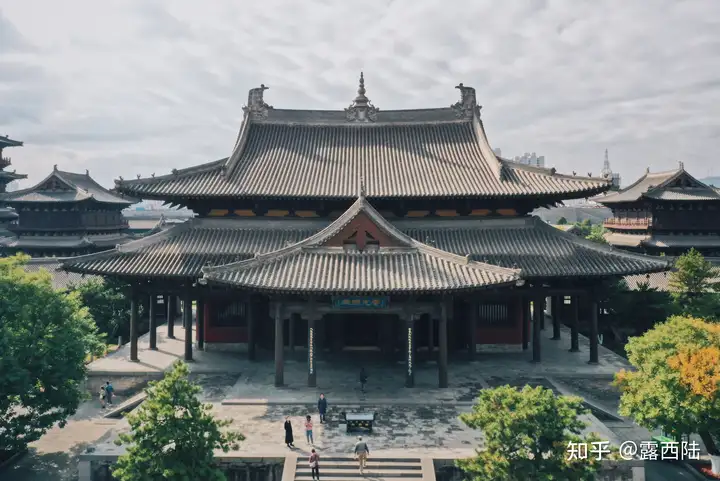
Lower Huayan Temple is not as grand as Upper Huayan Temple, but the Buddha statues inside are more exquisite. The "treasure of the temple"—"Eastern Venus"—is located here, it is the attendant bodhisattva beside the Buddha statue on the left.
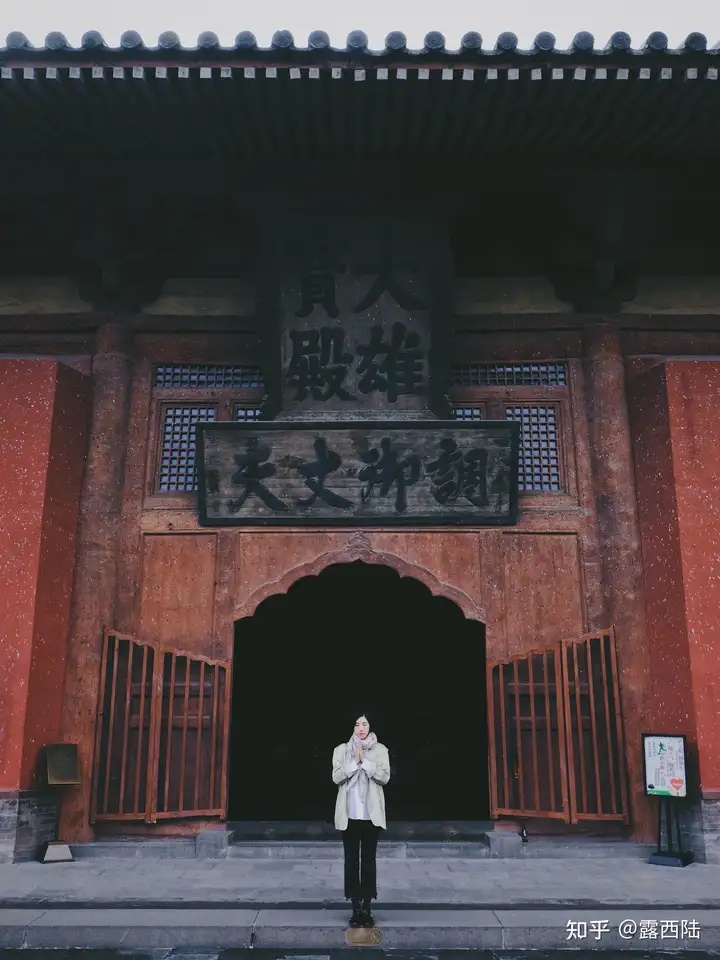
This bodhisattva statue is much larger than expected, standing nearly 2 meters tall. Its uniqueness lies in its toothy smile and exposed back. The standards of beauty from Eastern and Western civilizations are perfectly blended in this bodhisattva statue.
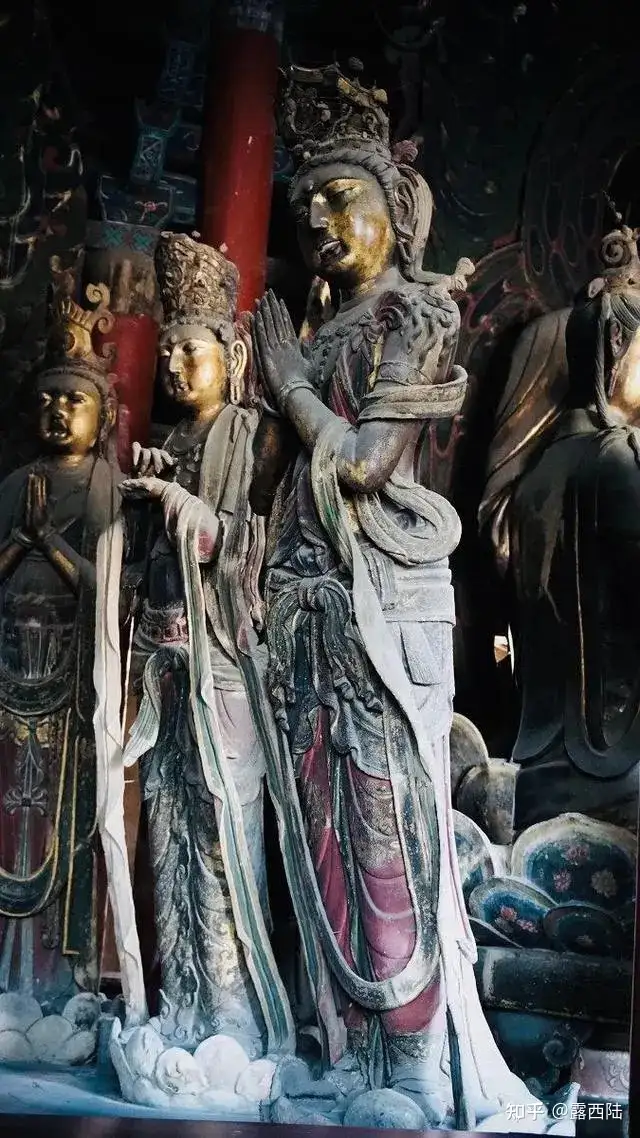
Dai Wang Fu
The Prince's Mansion is known as the "Little Forbidden City of Datong." The original buildings, like those of the Forbidden City, were constructed during the Ming Dynasty. The existing structures are reconstructions, and they are among the largest and most complete wooden ancient buildings currently reconstructed in China. Just standing at the entrance, one can feel the grandeur of the palace.
When we went, the building was still in the finishing stage and not open to the public. After operating for a period last summer, it closed again, and it is currently planned to reopen on May 1, 2023.
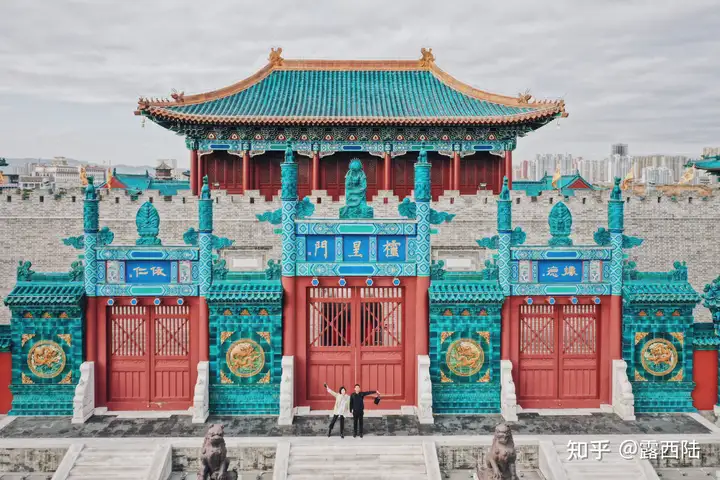
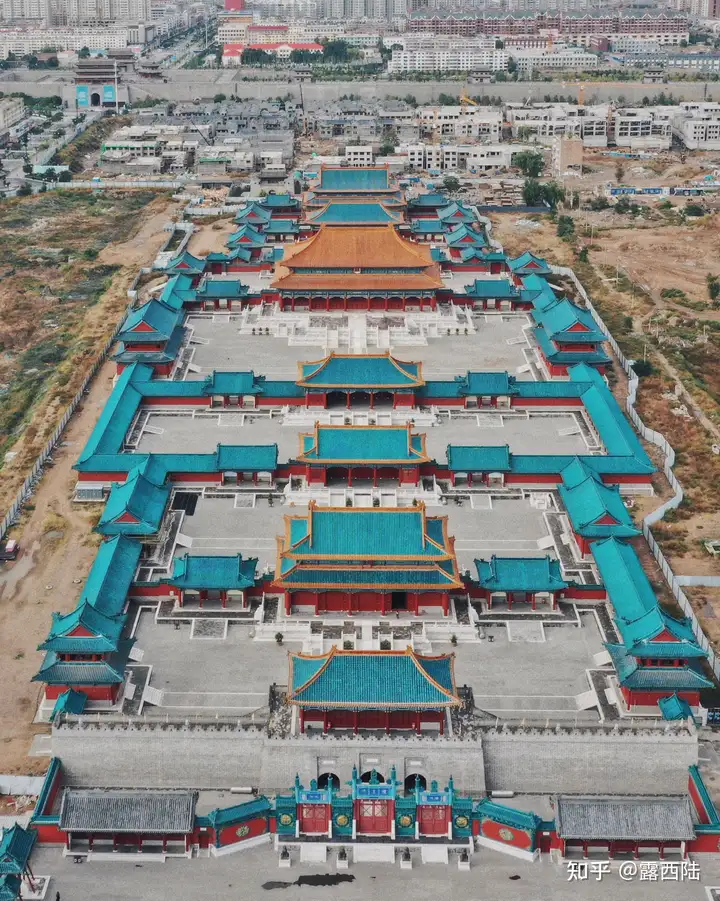
Ancient City Wall Square
The Datong Ancient City Wall has been entirely restored with brickwork on the original site from ancient times. It is highly recommended to climb up before sunset to see the scenery of both day and night. Bicycles and tandem bikes can also be rented on the city wall.
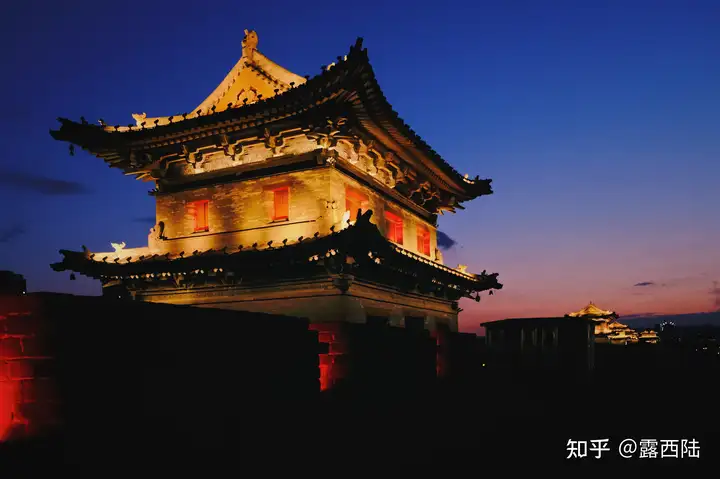
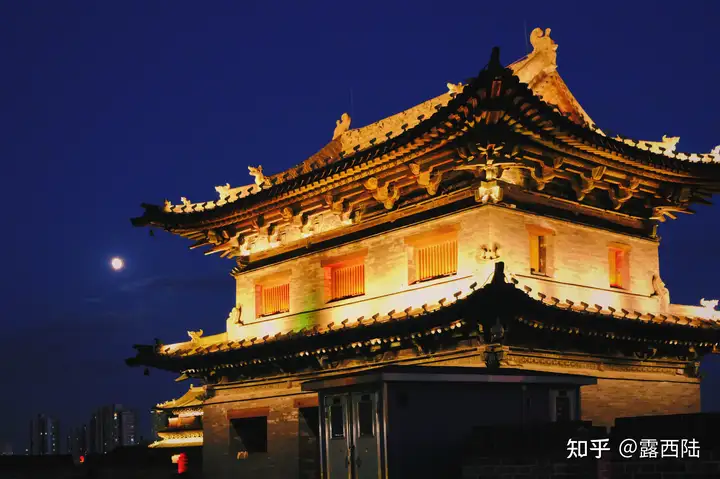
Datong has relatively loose regulations on drone management. We flew one on the city wall, and after sunset, the lights began to twinkle. Looking out from the ancient city at the city skyline gives a strong sense of the contrast between the ancient and modern urban landscapes.
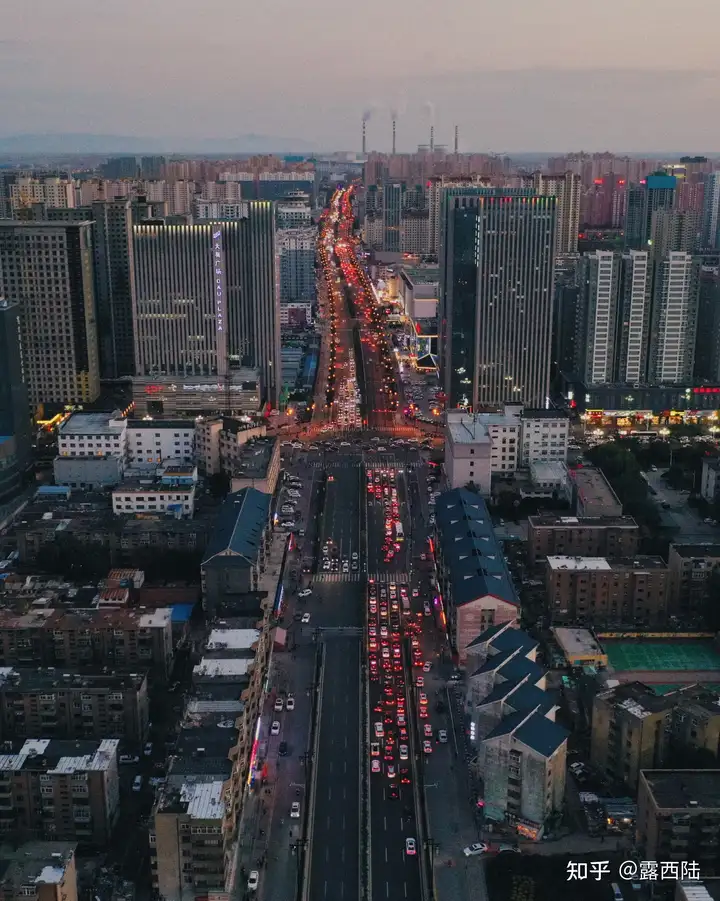
Day 2 Yungang Grottoes
No need for much talk, the Yungang Grottoes are Datong's most famous and splendid calling card. As one of China's four major grottoes, it was initially constructed during the Northern Wei period, with a history of over 1500 years. The Yungang Grottoes are located to the northwest of Datong City, about a half-hour drive away, and it's worth setting aside a whole day to explore them in detail.
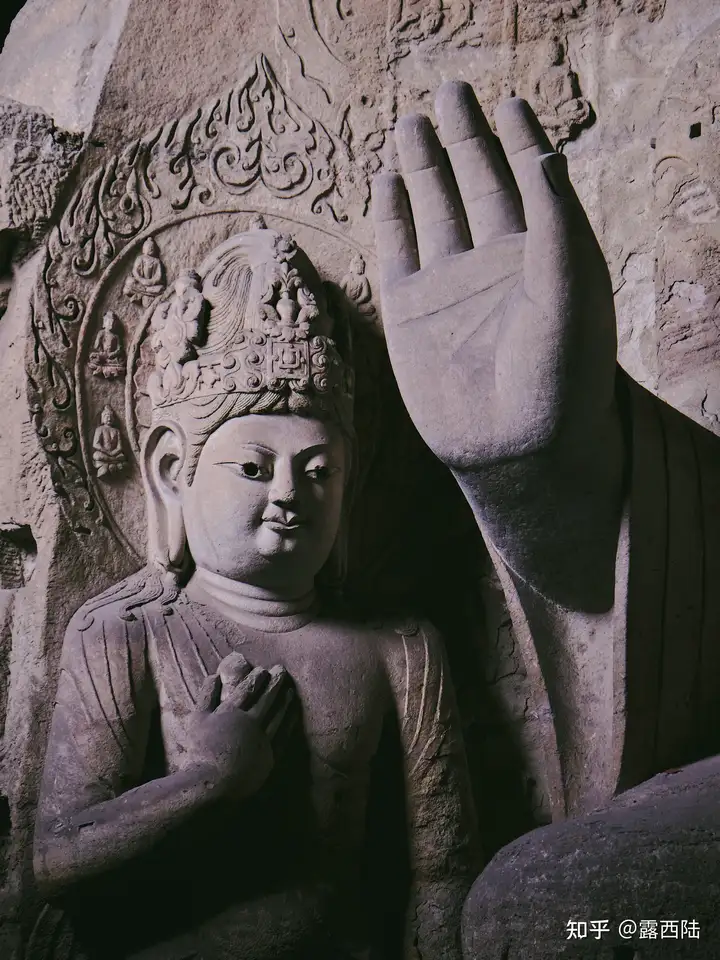
The most spectacular caves are the early and mid-period caves. The early Five Caves of Tan Yao are located at the farthest end, with colossal Buddha statues that exude a solemn and majestic presence. Many of the mid-period caves still retain the colors applied during their restoration in the Qing Dynasty, and they incorporate elements from multiple cultures, including India, Greece, and Rome, making them extremely exquisite and the most interesting to view.
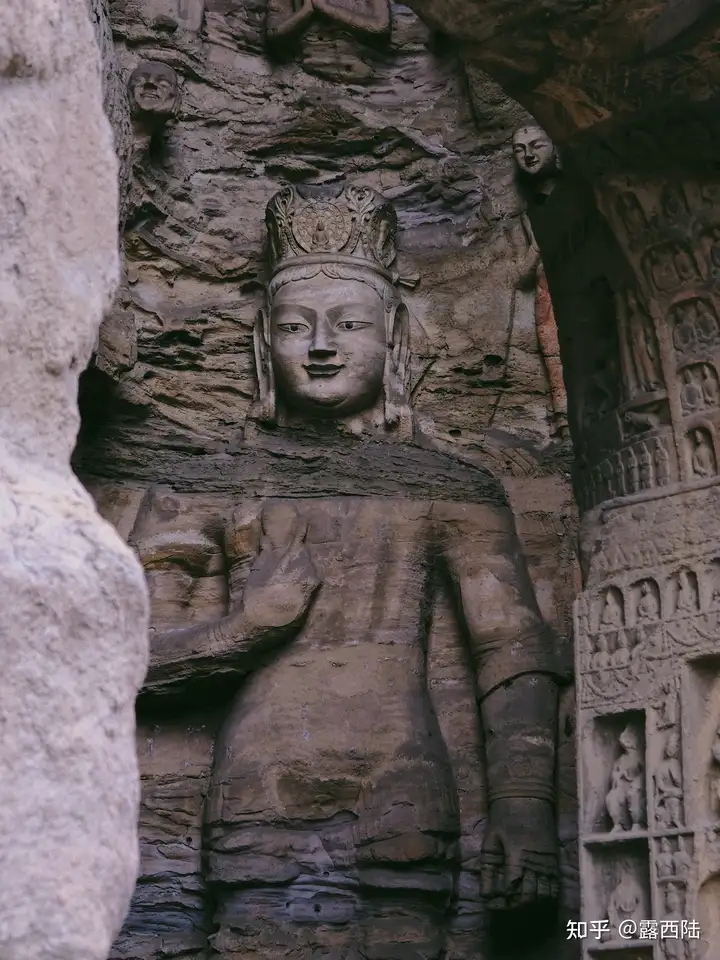
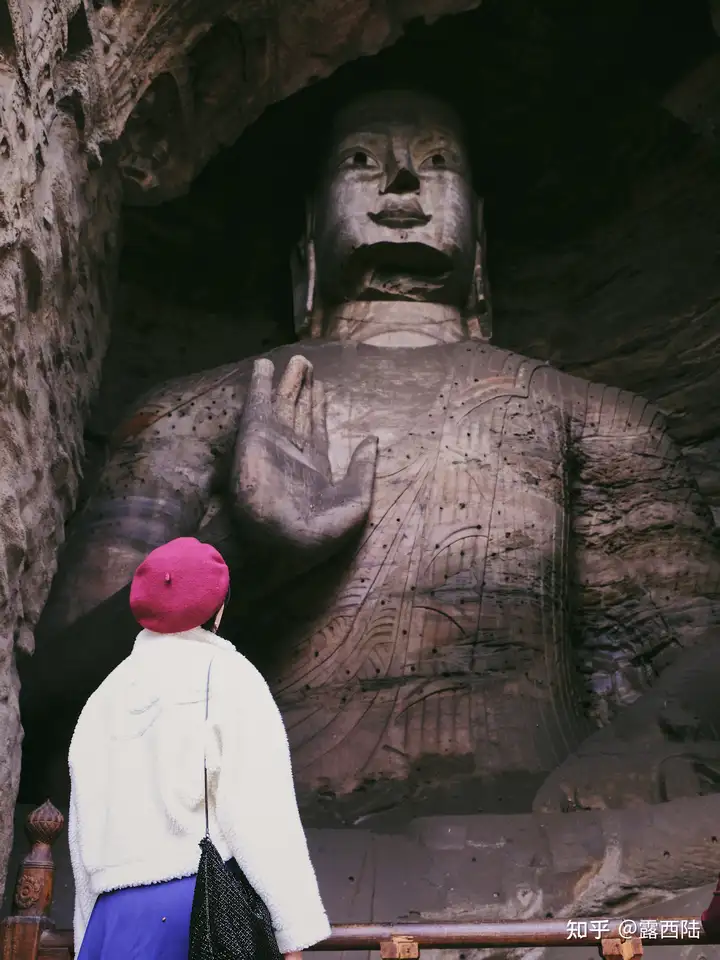
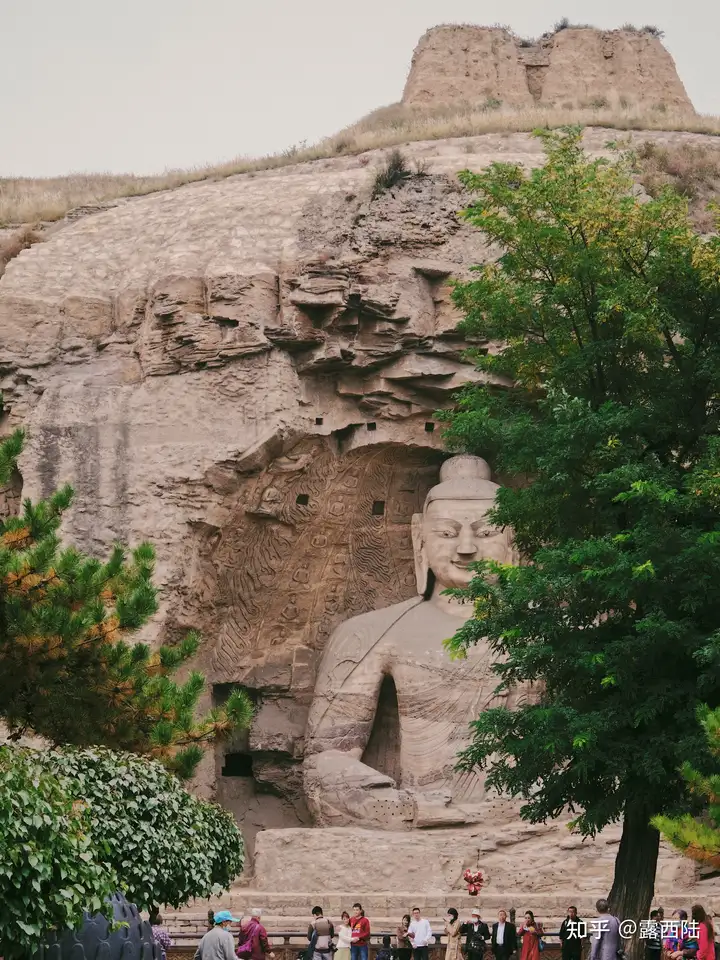
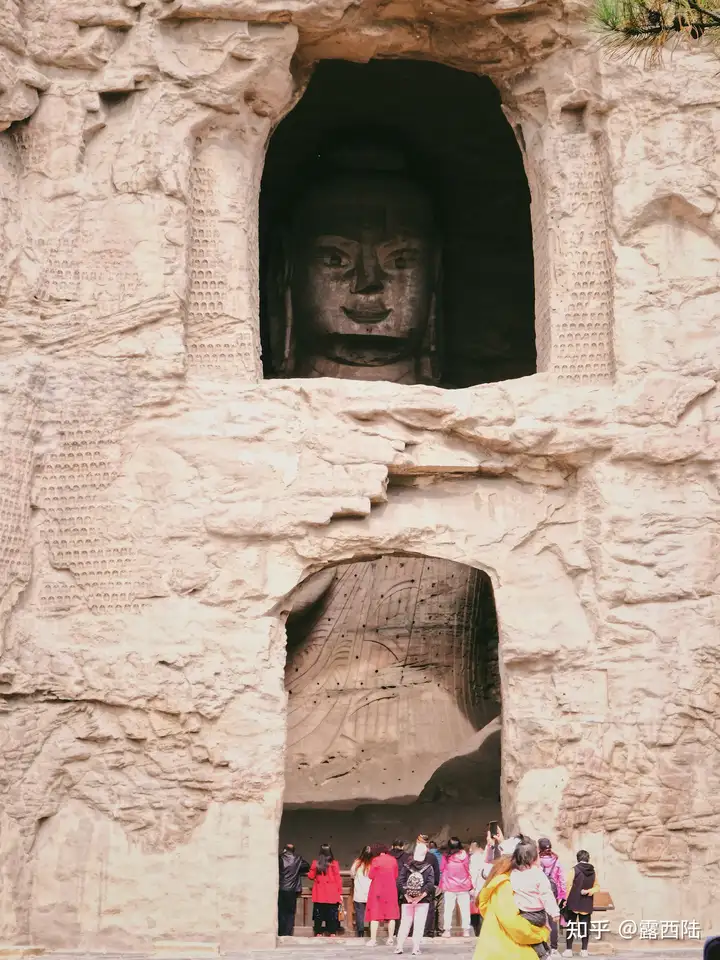
If you just take a cursory look at the grottoes, you can finish in less than an hour. If you find a tour guide to explain each grotto in detail, it will take 1.5-2 hours or even more. I strongly recommend finding a tour guide. Although there are also electronic tour guides, the guides provide more interesting and detailed explanations.
Besides the grottoes, there are many other places to visit and see in the scenic area. I recommend everyone to visit the grottoes first, then go to the Yungang Museum to learn about the history of the Northern Wei Xianbei people, and finally visit the Yungang Study to buy souvenirs.
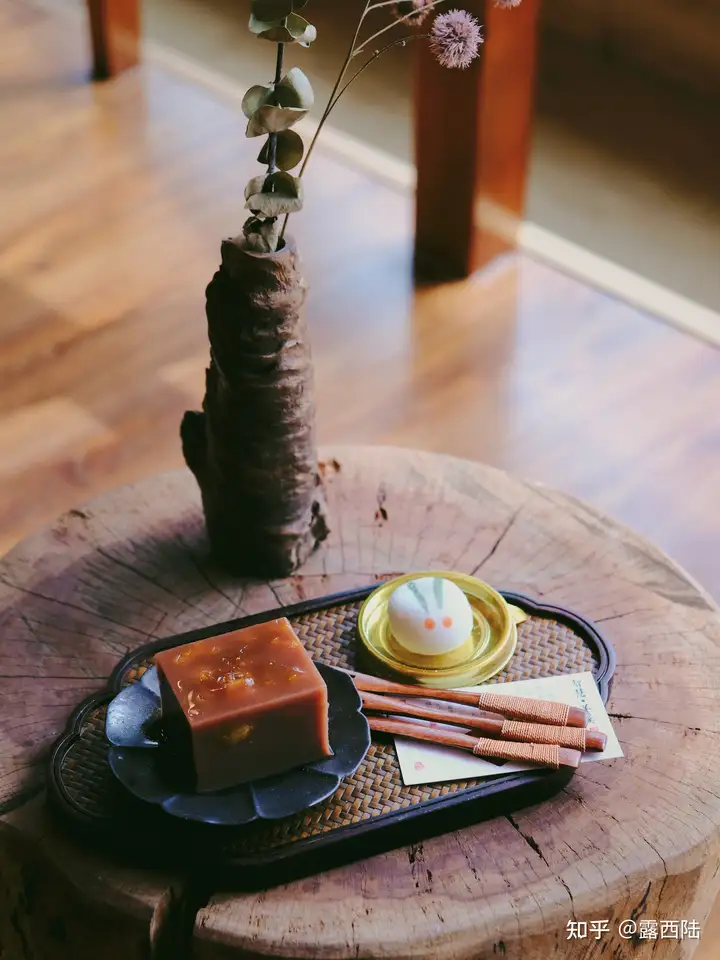
There is a cafe near the exit of the Yungang Museum, where you can try desserts with "Xianbei characteristics."
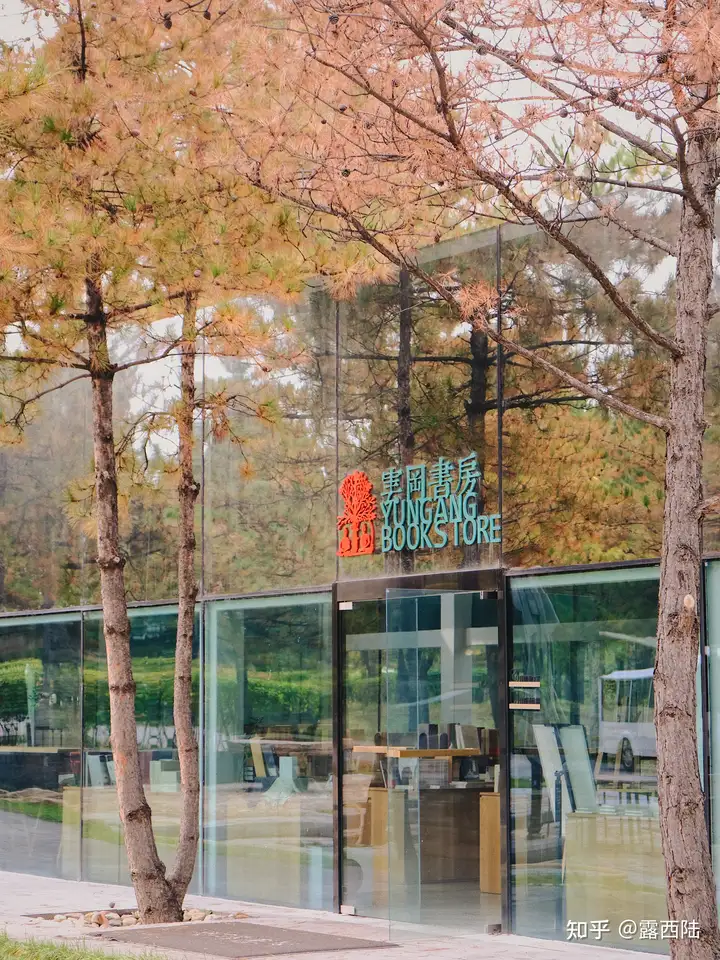
Please note that taking photos inside the color cave is not allowed! Everyone must 自觉遵守 when visiting. If you really like it, it is recommended to buy a cave picture album before leaving. Moreover, most of the Buddha statues are very large and not suitable for taking commemorative photos. The most suitable one for photos is the large Buddha in Cave No. 20. There is a sloping railing on the left side of the large Buddha, which is the best spot for taking photos.
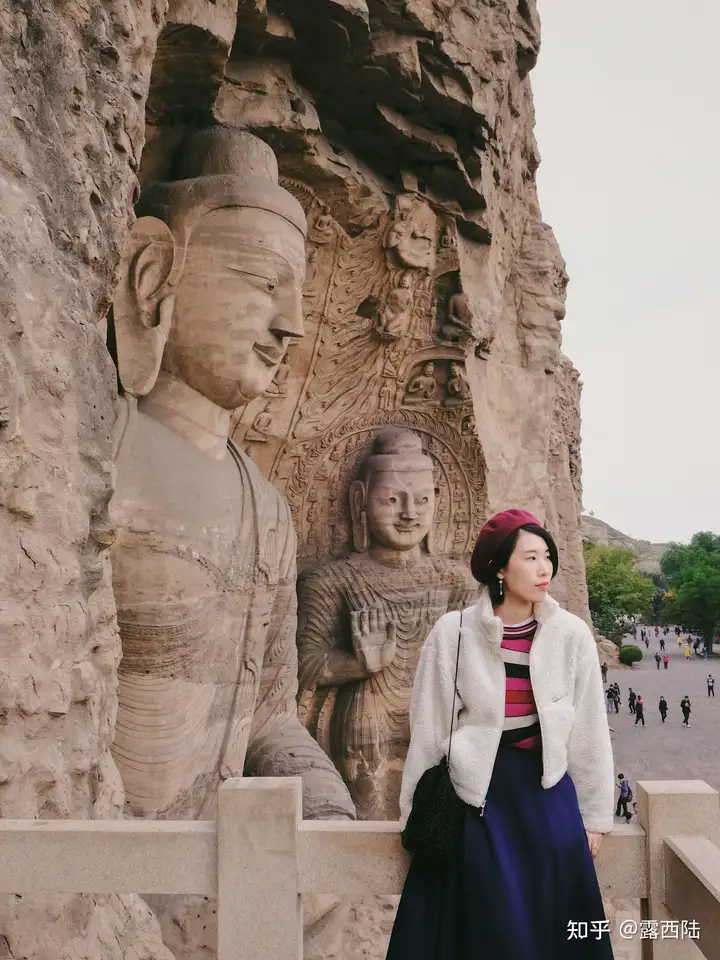
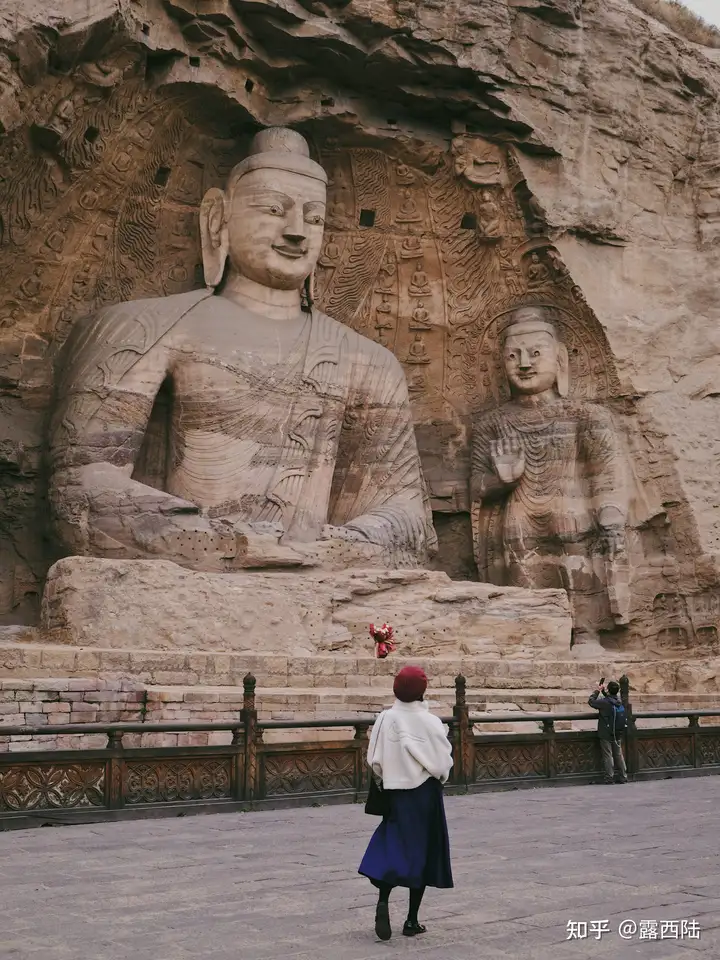
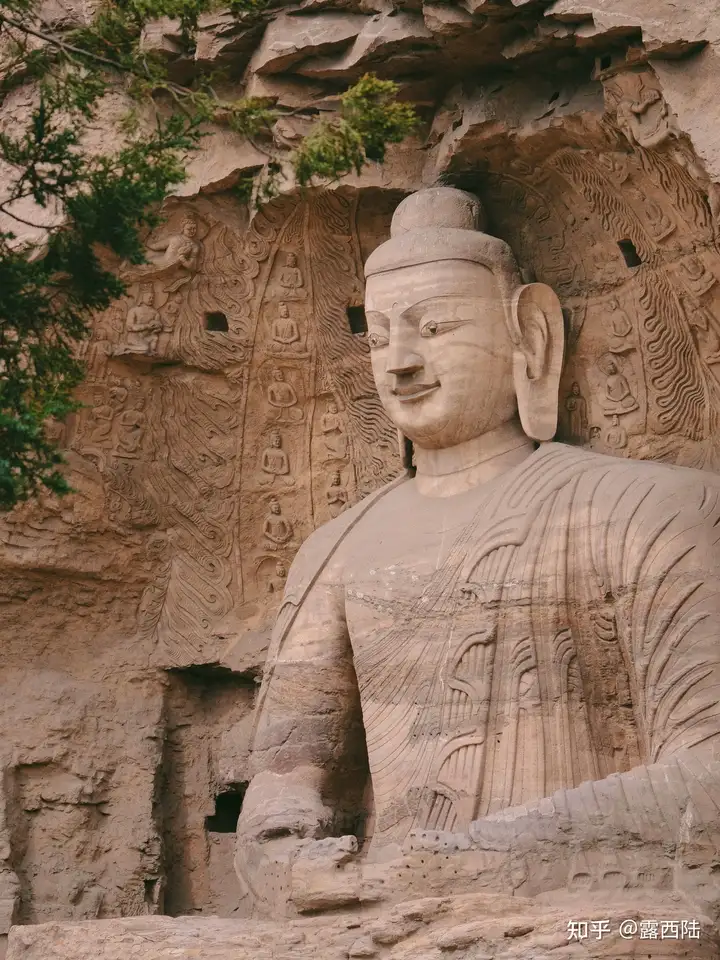
Day 3 Suspended Temple - Ying County Wooden Tower
The itinerary for this day revolves around the surroundings of Datong City, also featuring several ancient architectural wonders.
Xuankong Temple
Xuankong Temple is located in the Hengshan Scenic Area, about an hour's drive from Datong city. This is a quite unique building, with a sheer cliff on the left and a deep abyss on the right, making it a one-of-a-kind existence nationwide.
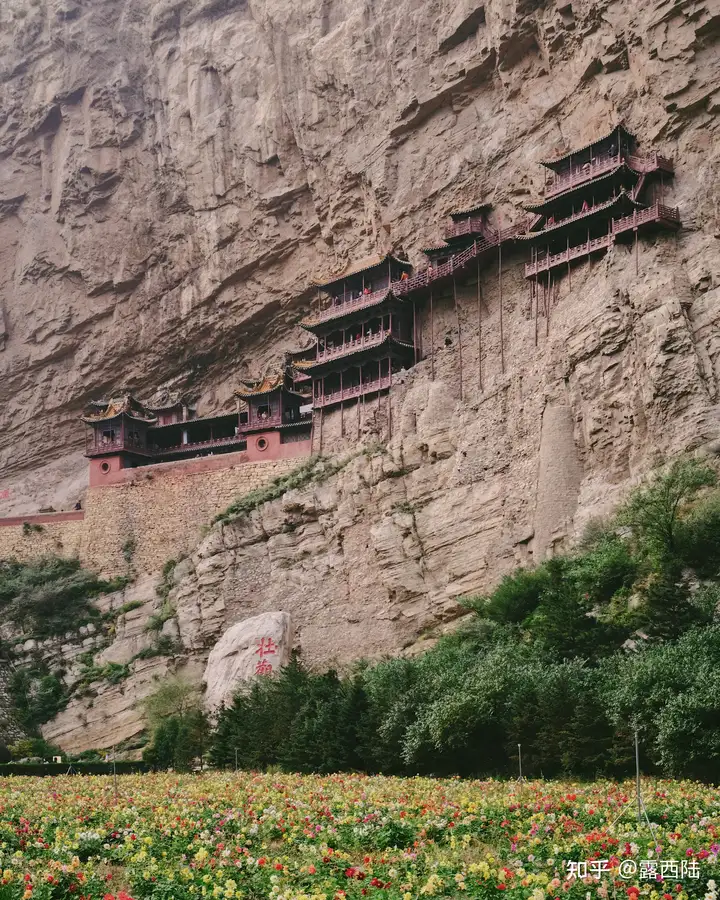
This was built by a Taoist priest during the Northern Wei Dynasty, as he had a dream in which an immortal asked him to build a temple in a place that is “upward extending to the celestial guests, downward isolated from the noisy and floating world.” This is why the Hanging Temple is built on a cliff.
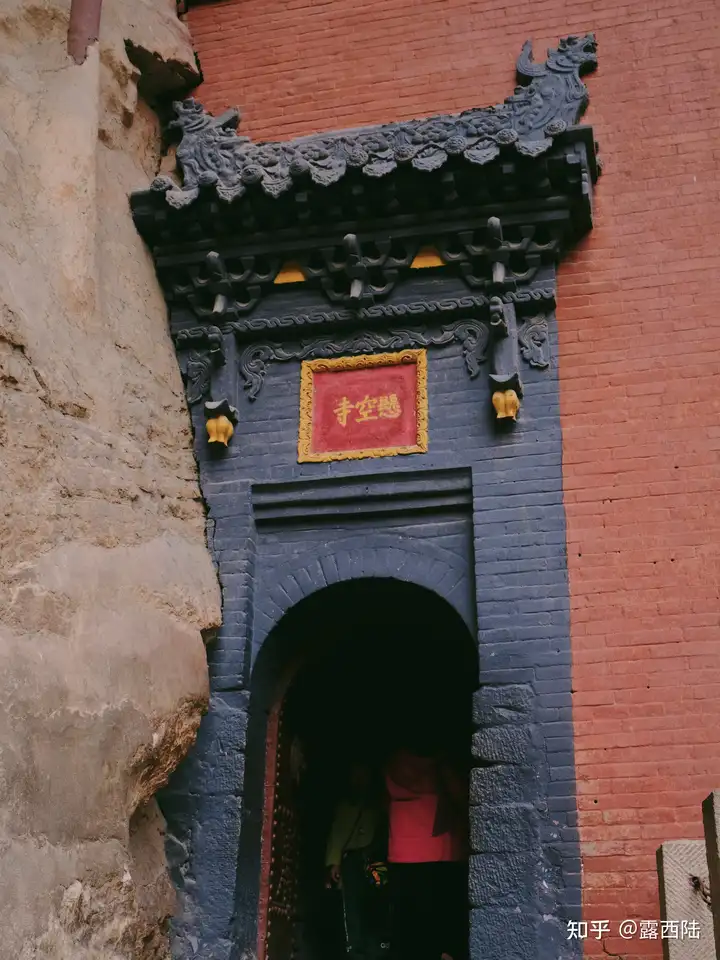
Of course, it's not really completely suspended. The ancients chiseled beams into the mountain body, using the principle of levers to distribute the weight. As for the vertical rods that can be seen on the surface, they are just used for auxiliary support.
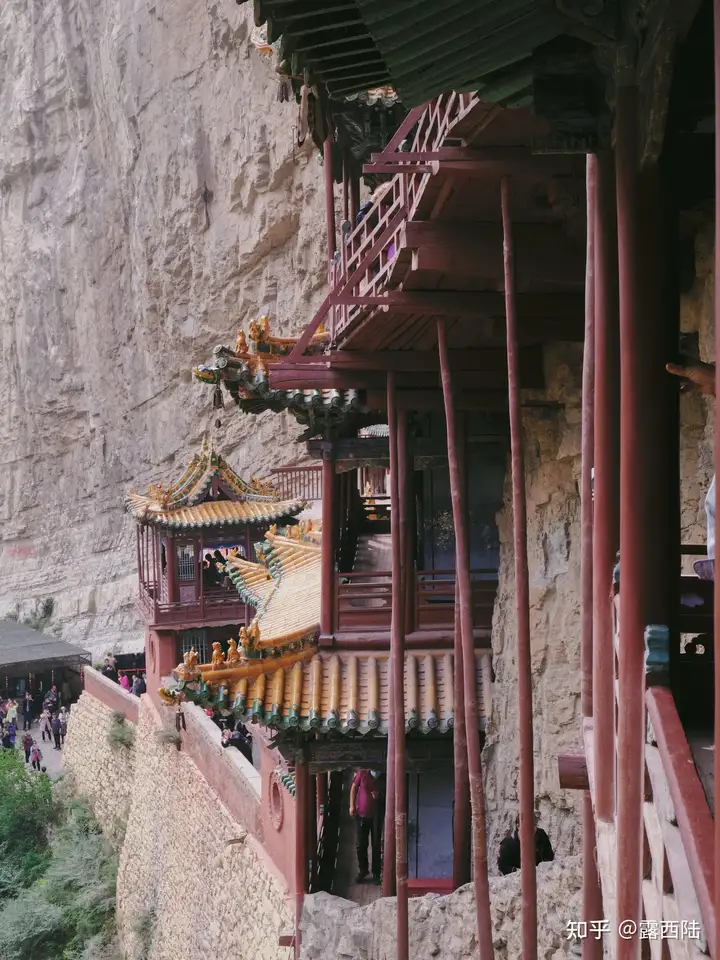
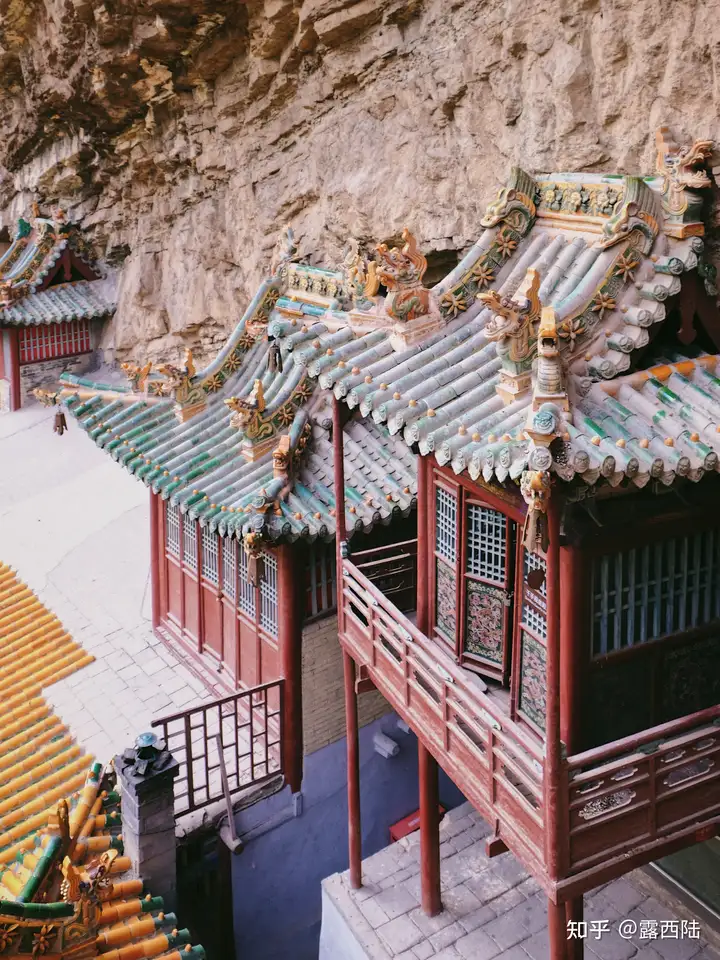
After all, it is a temple built on a cliff, with a very delicate structure. Although small in size, it has three floors and dozens of Buddhist halls, integrating Buddhism, Taoism, and Confucianism, with exquisite details. The combination of red, green, yellow, and blue is very ancient and harmonious, and the carved beams and painted rafters are meticulously crafted. The most beautiful is the Lei Yin Hall, which is filled with various levels of detailed and three-dimensional auspicious clouds and flying celestial beings, making it the most awe-inspiring place in the temple.
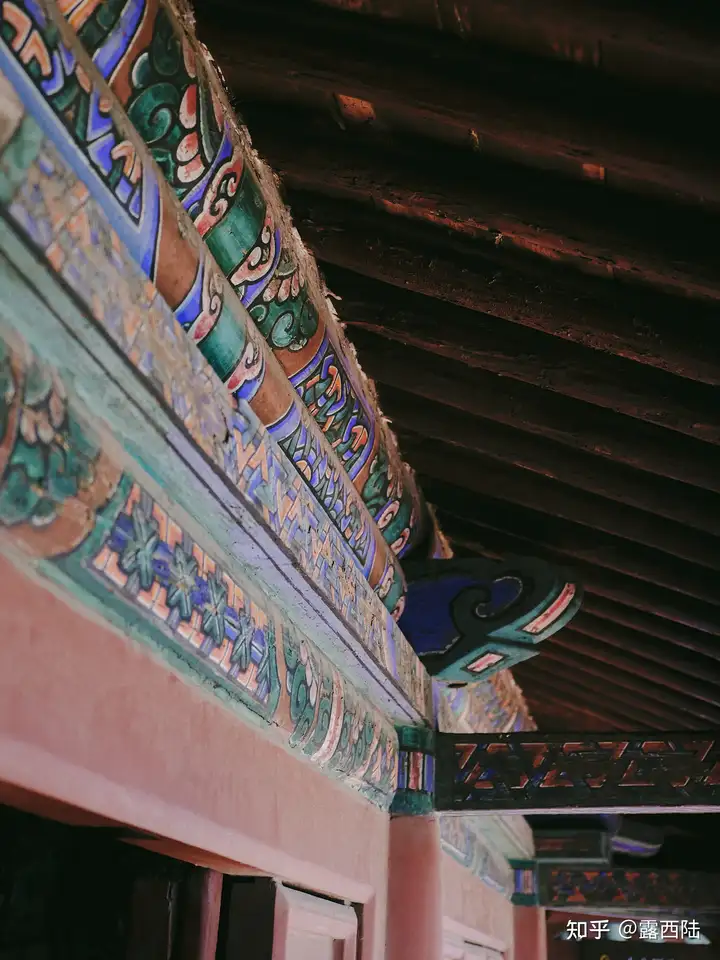
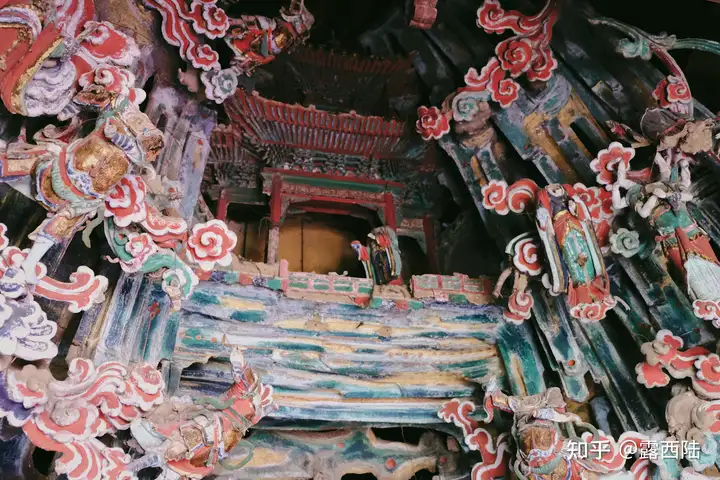
The most important thing when visiting the Hanging Temple is to wear comfortable shoes, as the temple is very dangerous, steep, and narrow inside. I do not recommend elderly people and children to climb the temple, because the stairs are very steep, and there are only low railings around with no additional guardrails, which can be a bit dangerous.
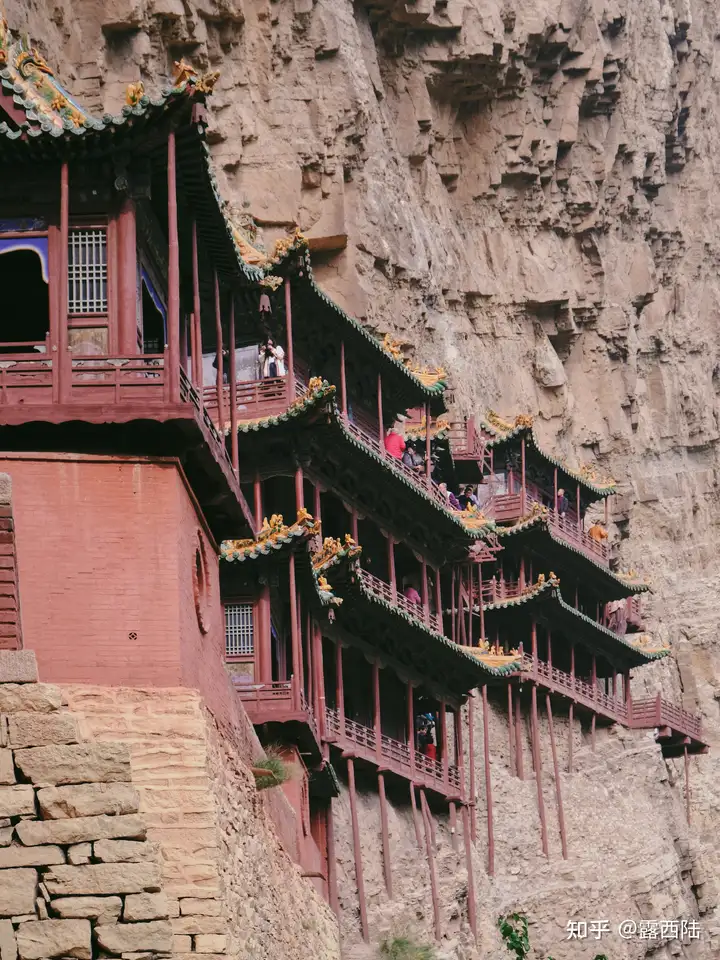
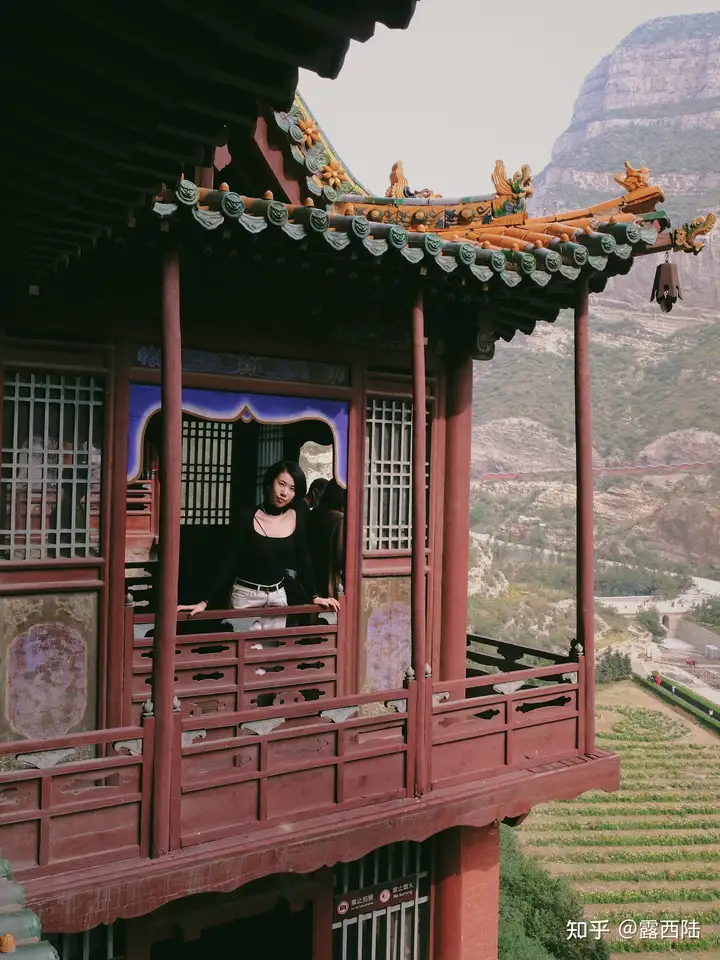
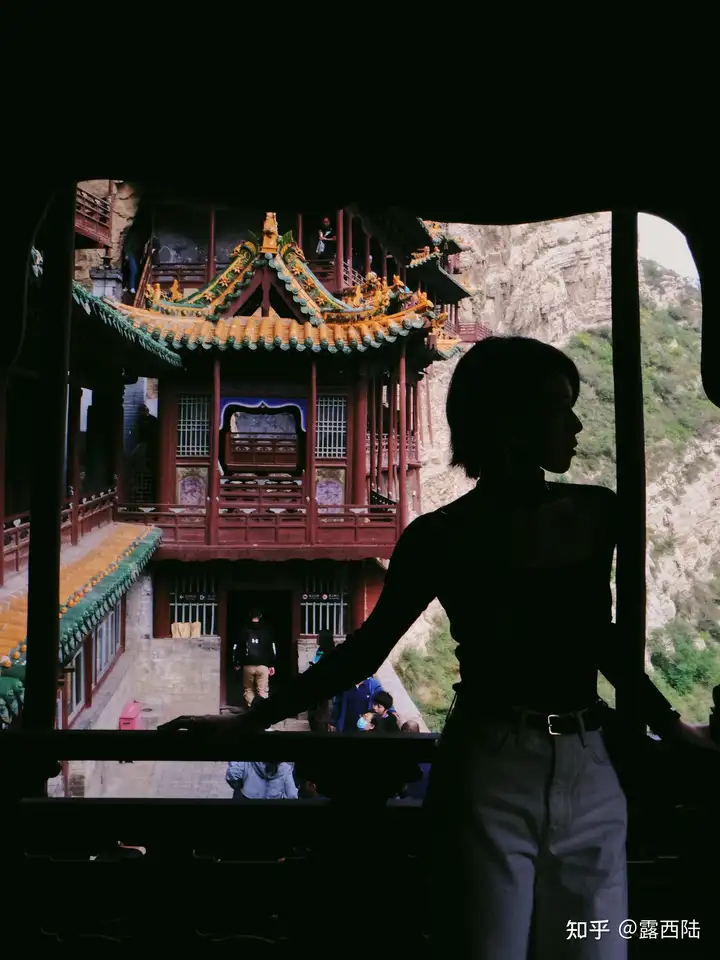
If you get a tour guide to explain at the Hanging Temple, it will take about an hour and a half to finish. Since it is located within the Hengshan Scenic Area, you can also take the opportunity to climb Hengshan after the tour.
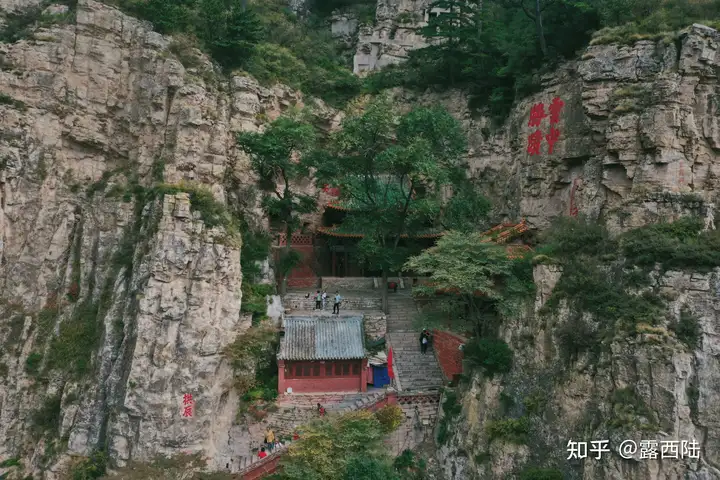
Ying County Wooden Tower
The Ying County Wooden Tower, also known as the Shakyamuni Tower, is one of the three great wonders of the world and the oldest and tallest existing wooden tower, standing at 67.31 meters, originally constructed during the Liao Dynasty. The tower houses two Shakyamuni Buddha tooth relics.
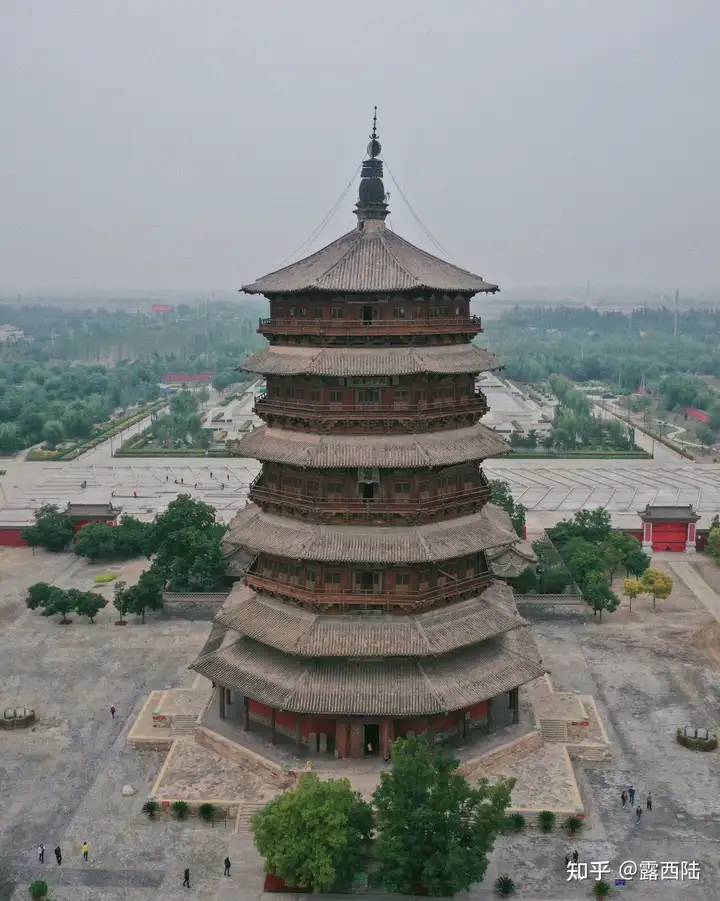
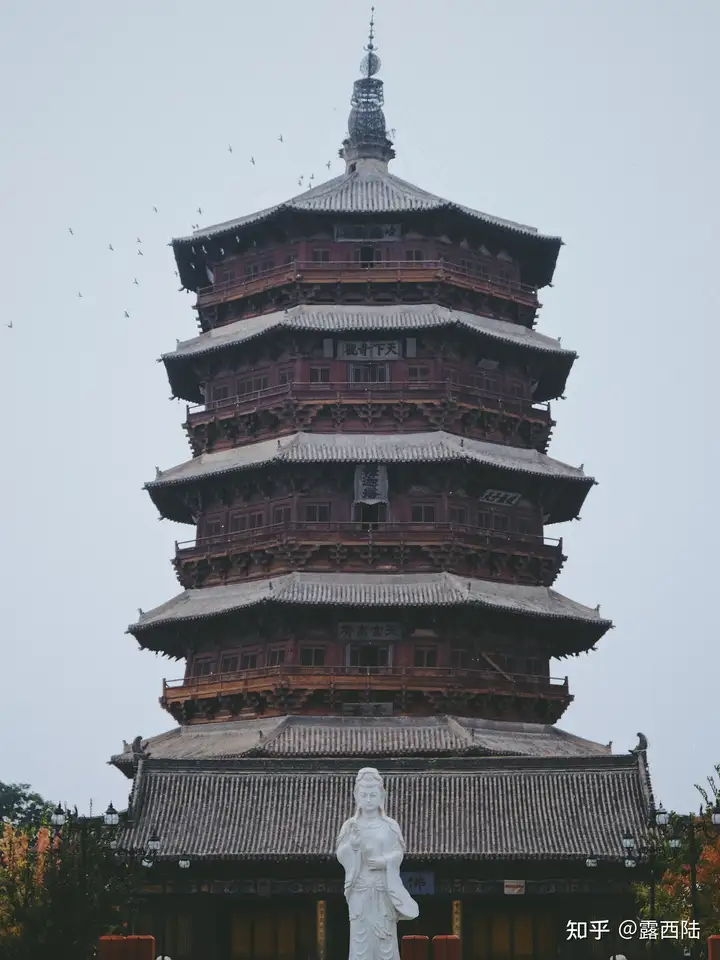
As a wooden structure, the Ying County Wooden Tower has withstood numerous disasters such as earthquakes, wars, and bombardments for a thousand years, all thanks to its unique architectural design, making it a marvel in the history of architecture. This ancient building, which only laymen can appreciate superficially, must be accompanied by a tour guide at the entrance to truly make the visit worthwhile. Its complex structure also makes it difficult to repair, so those who have the opportunity should hurry to visit, as it might not be visible after another natural disaster.
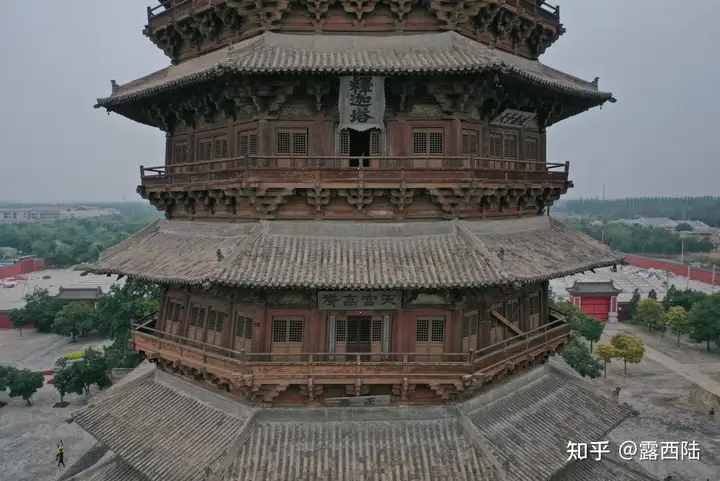
Day 4 Datong Volcano Group - Datong Earth Forest
Datong Volcano Group
In addition to historical architecture, the area around Datong also has unique geological features, such as a cluster of more than 30 volcanic cones. The natural scenery here is relatively unusual, and the scenic area is well developed with flat boardwalks, providing a comfortable experience. If you have a drone, the view from the air is even more impressive.
However, it seems that the scenic area is under construction at the moment, so it's recommended to check in advance whether it is open.
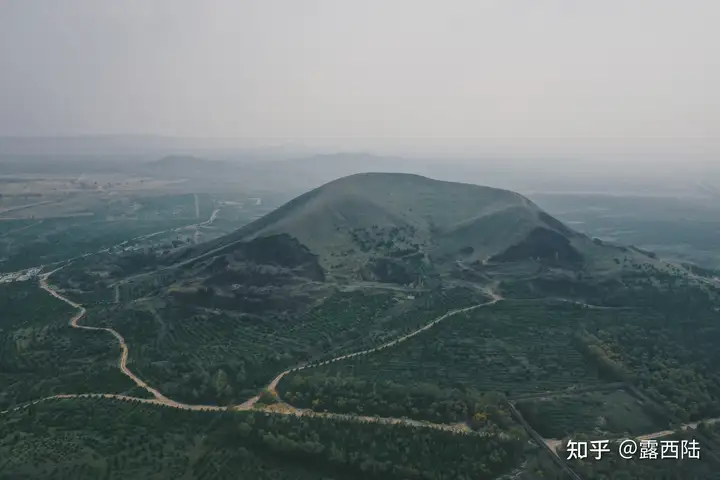
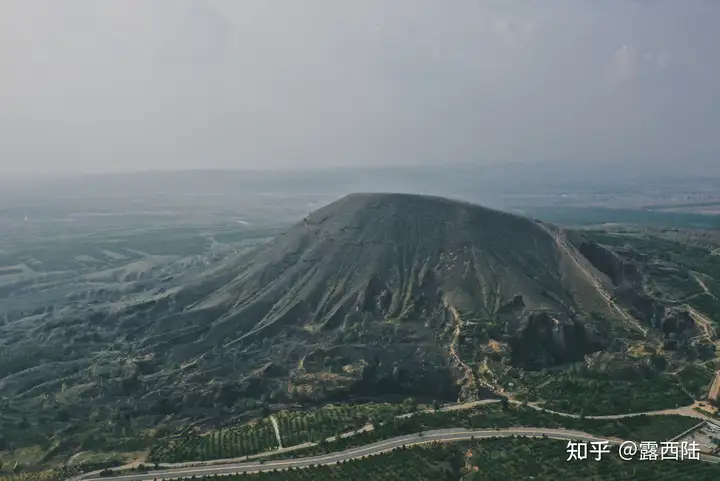
Datong Tulin
In recent years, the new "Martian landscape" attraction, with its dry and magnificent gullies formed by rain erosion, resembles the veins of the earth. Due to the same reason of rain formation, the appearance of the earth forest changes over time, and the classic view featured on the ticket is now much smaller.
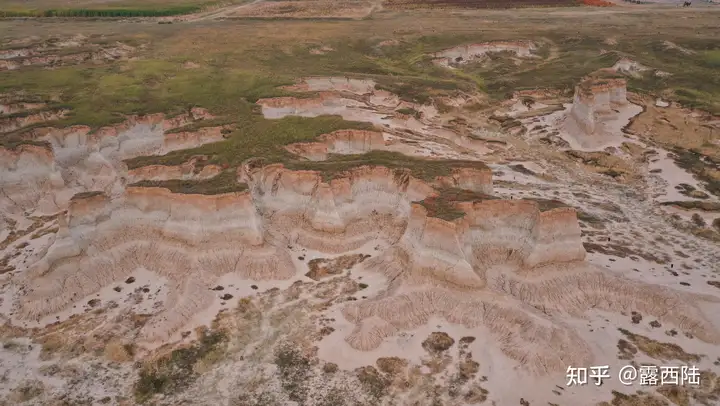
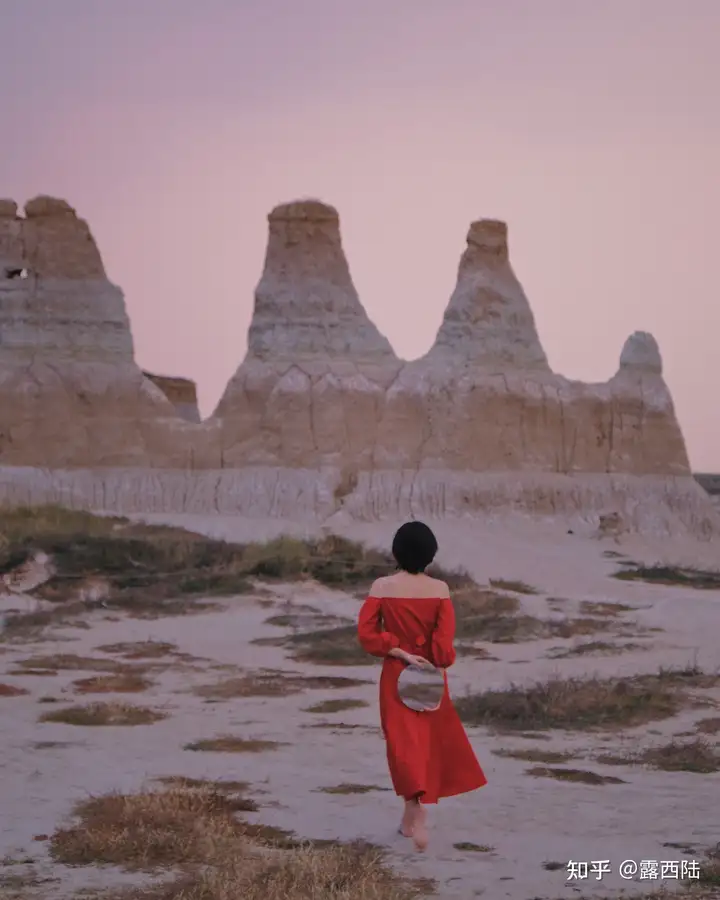
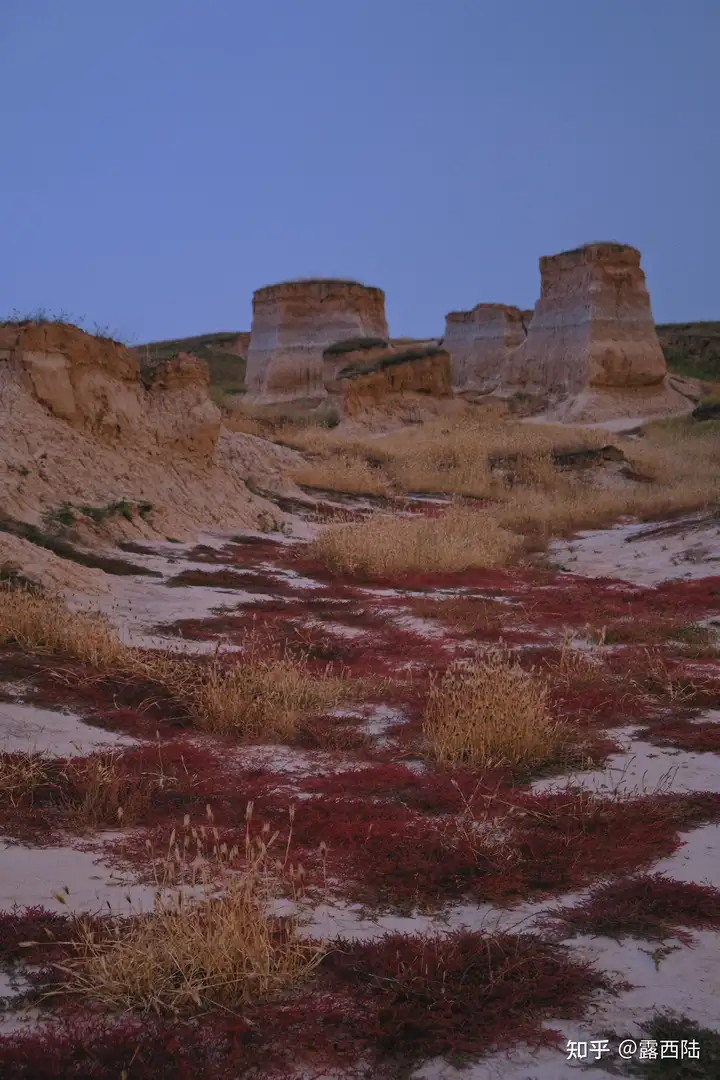
The area inside is not as large as imagined, so don't set your expectations too high. It's more suitable for a leisurely walk and taking photos. Besides the unique landforms, there is also a small lake with reed beds nearby, where you can capture some different scenery. About an hour is enough. If you have a drone, be sure to bring it.
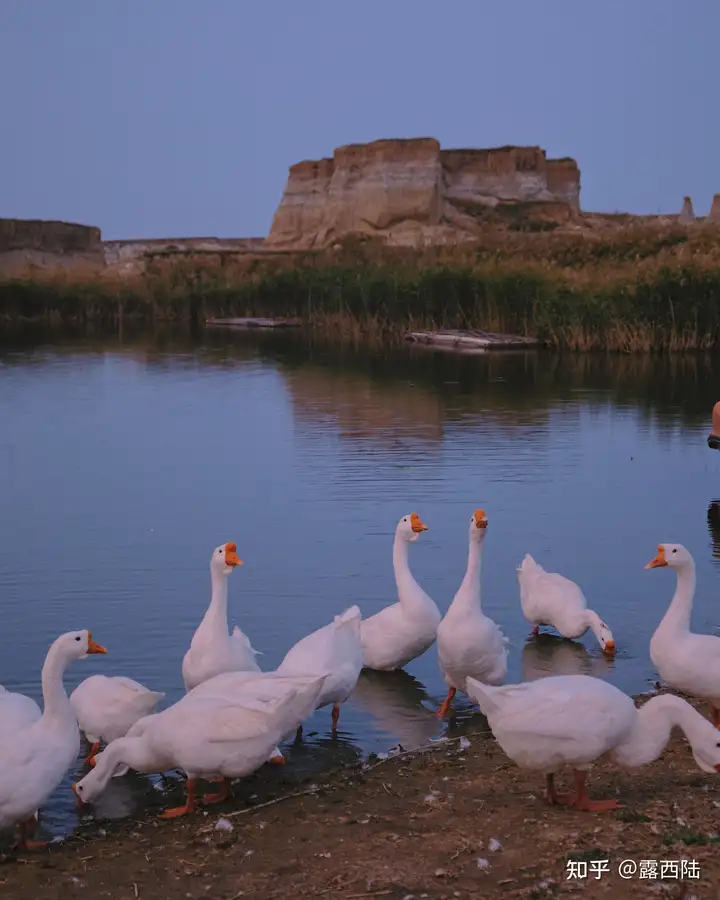
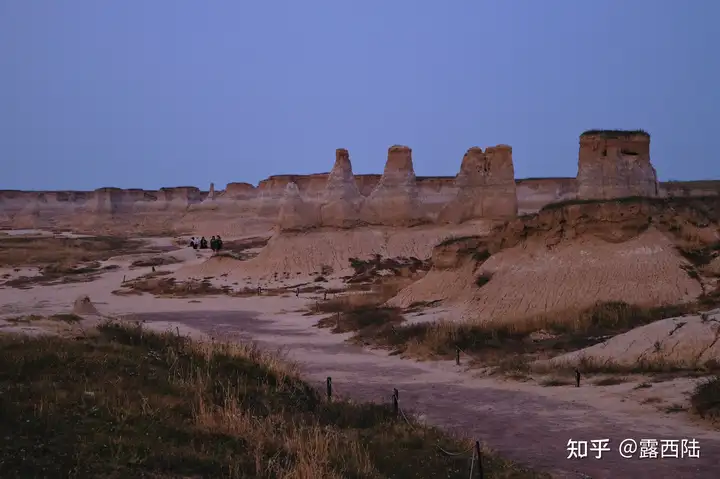

Published on 2023-04-16 17:55・IP Location: Beijing
More answers
If it's within 2 hours from Beijing, I must strongly recommend my hometown, Hebei!
"So close, so beautiful, weekend trip to Hebei." This sentence was on a poster I saw recently when boarding the high-speed train at Beijing West Station.
From the plateau to the desert, from the grassland to the seaside, Hebei weaves a condensed version of a "National Geographic Reader." In terms of cultural history, ancient capitals, ancient counties, and ancient villages form a stirring historical narrative.
Zhengding Longxing Temple, Zhili Governor's Office, Chengde Mountain Resort, and the Great Wall are also must-visit cultural landscapes within the country.
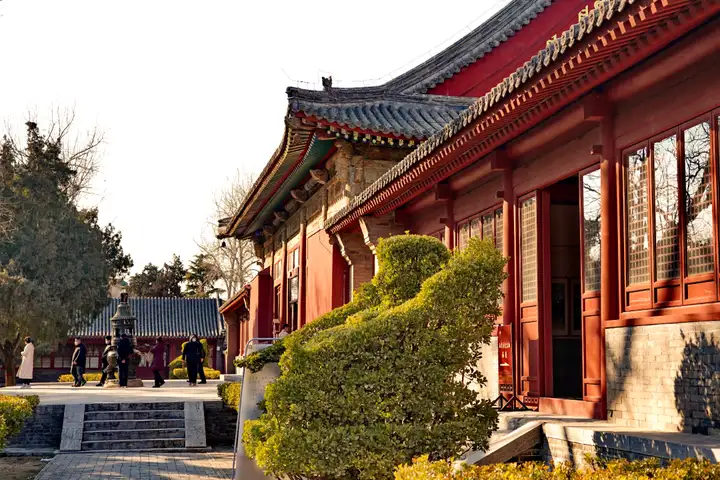
以前我写过京北大环线的自驾游部分。除了自驾外,河北旅游还有另一种打开方式:搭乘高铁来一场所走就走的旅行。

从北京出发,1小时高铁圈可以覆盖河北省内诸多的旅游城市。如果周末想来一场说走就走的旅行,去河北,确实是个好选择。
作为环京的重要省份,河北省的旅游业近年来发展也比较快。除了本身景区有着足够强的基础,近些年河北省内蓬勃发展的酒店业,也将河北省的旅游体验大幅提高。


和京郊游相比,无论是人文还是自然景观,河北旅行,都是一个性价比极高、物超所值的存在。那么搭乘高铁去河北,应该怎么玩?有哪些值得玩的地方,接下来,我们一起去看看!
京广高铁1小时:从保定到石家庄
从北京西站出发,搭乘京广高铁,在一个小时里,你会到达保定和石家庄。周末城市游,我建议把河北省的这新老省会放在一起玩。如果你有两到三天的时间,我建议你这么安排。
第一天一早,从北京出发,高铁就能到达保定东站。
冬季的华北平原气温相对较低,到站以后,一定要找个本地馆子,来口羊杂汤暖暖身子。
说到吃,河北省有句老话:“吃在保定”。小吃方面,著名的保定闫家驴肉火烧、白记牛肉罩饼、白运章包子都是可口的选择。

此外,被称为炒菜届的海底捞“小放牛”,也是从保定走出来的规模化连锁餐厅。

除了美食之外,保定的景点也是非常值得一看。始建于元代、扩建于清代的的直隶总督署,可以说是清王朝历史的缩影。包括如曾国藩、李鸿章等人都曾在此办公。

直隶总督署是中国保存较为完好的清代省级衙署,也是清代官式衙署建筑的重要组成部分,文物和历史意义非常大,对古建筑和历史感兴趣的朋友,不要错过。



逛完了直隶总督署,斜对面的古莲花池也建议去转转。保定的古莲花池是集园林、行宫、书院为一体,这里具有皇家行宫园林的风韵,又融合了中国南北园林建园艺术的风格与精髓,元、明、清各时期园林的时代特征集于一身。
冬天过来,风景更是别有一番韵味。
在保定逛吃逛吃一整天后,接下来建议直接搭乘高铁,只要半小时的车程就可以到达石家庄。
这样第二天不光是第二天的行程方便一些,在酒店上的可选也非常丰富。

在石家庄,我重点推荐两个必游之地:河北博物院和正定古城。这两个地方也让石家庄这座年轻的城市,承载了上千年的历史。

河北博物院位于石家庄市中心,地铁1号线可以直达。这座国家一级博物馆有着诸多国宝,历史课本上的长信宫灯、金缕玉衣的原件都在这里展出,这里都可以看到。

此外,包括像北朝壁画和曲阳石雕这样国内少见的展品,也是非常值得一看。
河北博物院北门西侧的红星包子和熏肉大饼,也是石家庄开了好几十年的著名小吃了,想饱口福的朋友一定别错过。
正定古城,对于热爱古建筑的朋友来说绝对是一个惊喜。这座位于石家庄市北部15公里的古城,历史上曾与保定、北京并称为“北方三雄镇”,也是是三国名将赵子龙的家乡。


被誉为“海内宝刹第一名区”的隆兴寺,虽然只是国家4A级旅游景区,但寺内汇集着大量珍贵的碑碣、雕塑、壁画等,诸多文物都有千年历史,堪称一绝!


上世纪三四十年代,梁思成曾多次到访正定,在此研究中国古代建筑。开元寺内千年赑屃和须弥塔,广惠寺独特的花型塔,以及赵云庙和荣国府,也都会让你对这座“活着的古城”印象深刻。

最后,我们聊聊石家庄的住宿。正如刚才所说,IHG在石家庄有着完美的布局,入门级的智选假日、性价比著称的假日酒店和体验很棒的洲际酒店。
京张高铁1小时:张家口
讲完了京广高铁之外,接下来我们转头向北。接下来,我们聊聊张家口。
从北京北站或者清河火车站出发出发,半小时车程就可以到达著名的中国葡萄酒之乡怀来,1小时就能到达张家口城区,而冬奥之城崇礼,也可以从这两个火车站出发,1个多小时的车程就到了。这三个目的地,我们也分开来讲。
1、怀来
先说只要半小时高铁车程外的怀来,怀来的周边景点不少,天漠、官厅水库湿地公园、鸡鸣驿古城等景区,让你可以在河北省收获一个完全不同的旅行印象。
怀来还有一个别称:中国葡萄酒之乡,在这里可以顺路打卡附近的酒庄,采摘、参观、品酒等一站式体验,有一种浑然天成的贵族之感。
2、张家口城区
而如果你没有选择在怀来停留,而是直接搭乘高铁到了张家口,自古以来,张家口是就是连接京津晋蒙的交通枢纽,长城在张家口一带蜿蜒而过,大境门上悬挂的大好河山,让人心潮澎湃。
到蔚县看打树花,到阳原看社火,也是近些年张家口冬季旅游的好选择。
而如果你有幸在冬季前往张家口,一定不要错过沽源的库伦淖尔的冬捕节。沽源是距离京津最近的冬捕活动地之一,渔猎文化传承千年之久。由于冰冻期长,鱼类资源丰富的库伦淖尔湖为冬捕活动提供了优越条件。
这个堪比查干湖的冬捕节,还是值得一看。
3、崇礼
接下来,聊聊崇礼。
一提到崇礼,大家想到的都是滑雪。冬奥雪场的开业,让热爱滑雪的朋友有了更好的选择。无论是到太子城还是刚建好不久的崇礼站,尤其是北京过来高铁也就1个多小时。
除了滑雪之外,在崇礼宅酒店也是个不错的选择,在冬季漫步在酒店周边的这些小镇上,真的有一种来到瑞士的感觉。
4A级景区富龙·四季小镇(崇礼富龙四季小镇国际度假区),依靠酒店集群、音乐小镇、配套商业、休闲娱乐、养生温泉以及各种餐厅、咖啡厅等各种业态组成了一个全功能的小镇。
翠云山皇冠假日度假酒店和智选假日酒店所处的奥雪小镇,也是秋季亲子遛娃的好地方,小镇内外设有多种儿童游乐设施,在这里待上一整天,绝对不会感到无聊。
京沈高铁1小时:承德
看完了京广和京张高铁的目的地,下面我们把目光转到北京朝阳站,从这个火车站搭乘高铁,1小时的时间,可以到达河北省的另一个历史文化名城,承德。
到了承德,鼎鼎有名的避暑山庄自然是不能错过。虽然进入冬季的避暑山庄,已经没有了宛若大自然的调色盘一样的颜色,但作为依山傍水的大型皇家宫殿群,承德避暑山庄绝对是个出片的好场所。
避暑山庄又名“承德离宫”或“热河行宫”,是世界现存最大的皇家园林,也是比故宫和颐和园加起来还要大的皇家居所。都放在避暑山庄里。
避暑山庄集中国皇家园林之大成,其地势西北高东南低,山景湖景都有,本来就是一个微缩的中国模型,分为宫殿、湖泊、平原和山峦四大部分。大小建筑有120多组,山庄著名的72景由康熙的36景和乾隆三字组的36景构成。
除了皇家园林之外,布达拉·行宫景区同样是避暑山庄的一部分,这里由皇家寺庙群中的普陀宗乘之庙和须弥福寿之庙组成,因仿拉萨布达拉宫和日喀则扎什伦布寺而建,俗称小布达拉宫和班禅行宫。
北京站高铁2小时:秦皇岛
最后,我们来说说海滨城市秦皇岛。
作为距离北京最近的海边,秦皇岛北戴河,一直都是大家对大海的向往之地。

不用买机票4小时飞到三亚,从二环内的北京站搭乘高铁,不到2小时就能到达秦皇岛。
无论是找个海滩看大海,在周边的小饭馆吃海鲜,还是参观山海关、老龙头这样的极具历史意义的景区,秦皇岛都是一个非常值的城市出游目的地。
尤其是进入到冬季的秦皇岛,海滩几乎被你独享。
是啊,整个秦皇岛,在冬季,每个海滩都是阿那亚。
写在最后
受限于篇幅的限制,在这次向大家介绍的四个方向的城市游里,还有不少景点没有覆盖到。比如保定的白洋淀、石家庄的西柏坡、秦皇岛的山海关与老龙头等等,这些同样可以依靠公共交通和网约车等方式到达。

如果说在夏秋之时,京北大环线的自驾让你包揽壮美河山,那么冬春季的高铁旅行,就可以最大程度的体会到河北省内人文景区旅行的精髓。
对于不少不愿意开车,或者是喜欢把时间放在人文类型景区的朋友来说,这么玩可以节省不少精力。
毕竟,河北旅行,永远会给你带来惊喜。
今天想和大家聊一个距离北京很近的省会城市,从北京坐高铁过去只要两个半小时。
它是“中国乳都”,你喝到的国产牛奶大多是从它那里生产并输送到全国各地的,它是一个多民族融合的地方,你能在这里尝到各族美食,它是一个位处内蒙,口音却和山西非常相似的城市...
对,它就是人们去内蒙古旅游时,总被当作中转站的内蒙古首府--呼和浩特,这个名字是蒙语,翻译过来是“青城”的意思,日常生活里,大家总是亲切地叫它“呼市”。
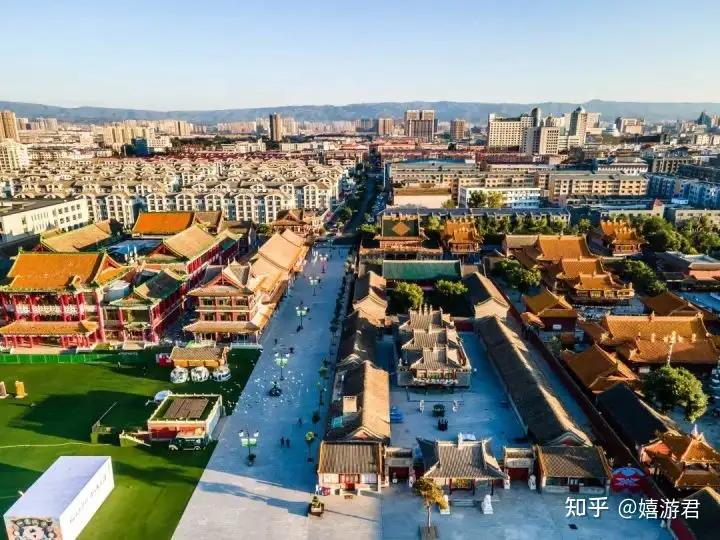
Part1
在呼市市内,可以这么玩
大召无量寺
⌚开放时间:夏季:08:00-18:00;冬季:09:00-17:00
地址:玉泉区大召前街大召无量寺
门票:35元
大召寺是一座兴建于明朝万历年间的寺庙,大召用蒙语说就是“伊克召”,意思是大庙,他还有个汉语名字,叫无量寺。
在呼和浩特,大召寺是最早建成的藏传佛教“格鲁派”寺庙,格鲁,意味“善规”。

这座坐北朝南的寺庙一共占地3万平米,寺庙中有经幡飘动,据说这是祈福的仪式。
经幡与寺庙内的壁画,以及寺庙本身的色彩,组成了一道叫人难忘的人文景观。


在藏传佛教中,每种颜色的背后都有它的含义,而藏传佛教的建筑,也好以繁复的色彩来凸显出建筑本身,大召寺的大雄宝殿就是这种风格的建筑,其余皆为汉式。
夜色降临时,在灯光映照下的大召寺,变得更加引人注目。

大召寺的看点共有三处,分别是银佛、龙雕与壁画,都是明朝遗留下的古物。
其一,银佛,当年建寺时,建寺的发起人从尼泊尔请来了巧匠,用掉三千斤纯银铸造了一座释迦摩尼佛像,故而这座寺庙也被称为“银佛寺”。不过大召寺的殿内是不允许拍照的,这里就不做展示了。
其二,龙雕,在寺庙的建筑的通天柱上,有两条金龙盘踞于上,神奇的是,这两条金龙是由纸与泥浆制成的,但在漫漫岁月中,却没有出现缺痕。
其三,壁画,大召寺的壁画相传是用天然石色作颜料,敦煌壁画中,也大量使用了这种色相稳定的矿物颜料。从1984年开始,这批有数百年历史的壁画因急需修复,被陆续搬入呼和浩特博物馆。

龙雕
大召寺前是阿拉坦汗广场,阿拉坦汗的塑像就在此处,他,就是修建这座寺庙的发起者。

塞上老街
⌚开放时间:全天开放
地址:玉泉区大召西夹道与通顺街交口东10米
阿拉坦汗广场旁边就是塞上老街,这是一条卖小吃与古玩的街区,它本身是有“明清第一街”的说法的,因为这里原本是明清时期对外交易的重镇,但现在的塞上老街是新建起来的仿古建筑群。

不能说塞上老街是个会让人踩雷的小吃街,因为味道都还可以,但除了“图雅家蒙餐”之外,似乎就没什么能推荐的呼市特色美食了。
不过这条街上还住着很多本地人,如果你对呼市的老城生活感兴趣,反正几个景点都挨在一起,一起顺道看看呗。


清真大寺
⌚开放时间:08:00-18:00
地址:回民区道南街28号
门票:免费
位于呼市回民区的清真大寺,是一座包含了伊斯兰装饰的中式建筑。
其实中国的古代清真寺庙,都是中式建筑,八十年代之后,才逐渐出现阿拉伯式的清真寺庙。

这座清真大寺的建成年代,现今已经不可考了,但它在乾隆年间被重新修葺并扩建,这件事是确定的。
寺内最独特的就是望月楼,望月楼的顶上是一轮弯月,伊斯兰的教历就是根据月亮的转动而来的。


在清真大寺附近,有一处伊斯兰风情街,可惜在不断的拆建之后,已经失去原有的神韵了。

绥远城将军府
⌚开放时间:08:00-18:00
地址:新城区新华大街31号
门票:免费
呼市的将军衙署,有“漠南第一府”的美誉,它是按照清代一品封疆大吏的规格建造的。建于乾隆年间的它,到今天已经有三百余年的历史了。

在它作为将军府衙的172年间,有78位将军在这里办公居住,当时全国范围内的驻边疆将军府邸共有13处,但呼市这座,是目前保存最完善的。
如果你对清代的武官府邸感兴趣,想要代入一下二月河先生的《乾隆皇帝》书中的剧情,倒是很适合来这里感受下,当年塞外将军的生活。


将军衙属最美的时节是春天,虽然它是武官住所,听起来是威武硬朗的,但每年四五月份,院子里的杏李以及丁香,都会在枝头竞相开放。
或许,住在这里的将军们,有那么一位,是心有猛虎,在细嗅蔷薇的人呢。


相类似的建筑,呼市市区内还有一座,是康熙帝的固伦恪靖公主的府邸。
这是一座清代四合院建筑,里面的物品多为复刻品,其实看点不太多,只有在桃花灼灼的季节,才会引起人们对公主生活的无限遐想吧。


内蒙古博物馆
⌚开放时间:周二至周日:09:00-17:00,16:00停止入场
地址:新城区新华东街27号
门票:免费
如果你是个爱看博物馆的人,肯定知道,国内各个城市的省市级博物馆的文物,有很高的相似性,最后逛下来总是会兴趣寥寥。但内蒙古自古以来就是多民族聚居区,那么它的馆藏内,必然有很多有关古代少数民族的物件,放在平时,这些都是会被当作特展展出的。

既然到了呼市,最好是直奔内蒙古博物馆的“大辽契丹”展区,这里会将契丹族波澜壮阔的草原文明变迁史,通过各个时期的文物展现在你的面前,这可是个感受游牧文明的好机会。
在这里,你可以看到鬼吹灯中到过的契丹族女巫木棺,西周春秋时期,陈国公主墓中出图的黄金面具,以及内蒙古博物馆的镇馆之宝--匈奴鹰顶金冠。
看多少遍有关游牧文明的历史书,都不如亲身感受这些带有神秘色彩的文物。

鹰顶金冠@传闻中的秦白白

彩绘木棺@传闻中的秦白白
Part2
开车半小时出市区,就能看到塞外风光
敕勒川草原
⌚开放时间:全天
地址:新城区呼和塔拉东街太阳广场东北400米
门票:免费
敕勒川其实很有名,只是被你忘记了。
在语文课本中,有一首低年级小朋友都知道的北朝民歌,叫《敕勒歌》。
“天苍苍,野茫茫,风吹草低见牛羊”,描述的就是敕勒川,而如果你是《剑侠情缘》这款游戏的玩家,游戏中有一处“阴山大草原”,说的就是这个地方。
当我立足在敕勒川大草原上时,耳边总是会回响起游戏里面的那首蒙古歌谣,悠扬而动人。

这个位处于祖国北疆的万亩草原,离呼市市区只有十几公里,自驾过去只要半小时左右,入口就有免费的停车位,而且坐103路公交车是可以直达的,这是最方便的点。

来敕勒川草原的最佳时间是7月份,此时的草原虽然比不上呼伦贝尔草原,却也能体验到一望无际的辽阔感。
景区里可以租共享自行车骑行,在草原上骑行时,可以看到远处优哉游哉的牛群,它们看向你,好像在对你说“欢迎你,旅行者,我们欢迎你,就像欢迎草原上的风”。


哈素海
⌚开放时间:全天
地址:土默特左旗敕勒川镇哈素海
门票:免费;开车进景区需要收50元
位于敕勒川景区内的哈素海,具体的位置在呼和浩特的土莫特左旗。
我看网上有人反馈说,导航会定位在哈素海码头,但有时会不让进,你只需要和管理人员说你在里头定了农家乐就能通行了。

如果实在进不去,可以走026县道,开出去大概500米,就能到环湖路了。

去哈素海玩主要还是以赏景为主,夏秋两季最为适合。
夏天的哈素海,开着满湖的荷花,从敕勒川草原开过来的时候,会有种上一秒还在北疆的草原,下一秒就来到江南的穿越感。

但哈素海旁边,圣主广场上的成吉思汗雕像,还是会告诉你,这里是内蒙。

秋天来这里的话,能看到沿湖公路旁,漫无边际的半人高芦苇荡,一片苍茫。

远处是阴山的山脉,天空中是扑楞着翅膀的海鸥,夕阳下,影子被拉长。

Part3
呼市,碳水之城,羊肉之城
烧麦
关于吃,来呼市的第一站,就是去吃烧麦,毕竟烧麦起源于归化城,就是今天的呼市。
烧麦到底是写作“稍卖”还是“烧麦”,民间有个说法是,当时这种蒸点是在茶馆里头捎带着卖一下的,所以才叫“稍卖”,不过现如今已经混用了。
在呼市,因为口音的问题,稍卖也可以叫作“烧美”。

这种生在茶馆的蒸点,现在仍旧是搭配砖茶一起吃,想来是肉馅的烧麦吃多了还是会腻,不配茶不行。

对,内蒙西部(呼包鄂和周边城市)的烧麦和南方的糯米烧麦不一样,是纯肉馅的,大多只用牛羊肉,呼市一般都用羊肉,呼市人对羊肉爱得深沉。
烧麦里还会加大葱,多数只用葱白,因为葱白的味道浓烈。外面那层皮的样子也比南方看起来更精致一些,是花状的。
其实细说起来,内蒙版的烧麦感觉更合理一些呢,是经典的“碳水包肉”,虽然呼市本地人会用焙子夹稍卖,这种套娃行为倒是和南方“碳水包碳水”的烧麦如出一辙。
关于焙子是什么,我在下文会介绍到的,别急~

那么,在呼市吃烧麦该去哪家呢,呼市是有“烧麦文化街”的,但也不用这么刻意地去打卡。其实随便去一家人多的,特别是爷爷奶奶多的地方就行了,一般这种有代表性的名小吃,在本地真的很难出错。
你能在南京吃到难吃的鸭血粉丝汤吗?不能吧。

店铺推荐
老绥元烧麦 丨 呼市随处可见的连锁餐厅,店里的蒸羊肉大葱烧麦是招牌,典型的皮薄肉多的好烧麦,咬一口,羊肉中冒出的热气里带着非常足的葱香味。
德顺源|老绥元有名的是蒸烧麦,煎烧麦就不如德顺源了,羊肉烧麦在煎锅上滋啦作响,一口焦香气的羊肉烧麦,再加上一碗鸳鸯双杂提提味,满足~
沁园稍卖 |沁园在呼市只有一家,只开一家的话,品质就好把控,于是老板对烧麦的原料抓得很严,羊肉用的是苏尼特羊上的掀板肉,还有宁化府的陈醋、托县的辣子,讲究。
酿皮&莜面
呼市的碳水可真顶啊,前头的烧麦还没消化完,后头的莜面和酿皮就跟上来了。
之所以把这两样面食放在一起说,是因为它俩基本都是同时会在一家店出现的。
酿皮其实和凉皮是一类东西,只是叫法不同,但其本身也依据地区被细分成了不同的做法。
呼市主流的酿皮是巴盟酿皮,它的原料是产自内蒙河套平原上的小麦粉,加水后呈乳白色,现蒸的酿皮十分筋道。

在呼市,是可以将酿皮和牛筋面、粉皮掺杂在一起吃的,去店里和老板说要一份“三掺”,对方就明白了。
我对莜面最初的认识是山西的“莜面栲栳栳”,这种用莜麦做成的面食本身是没啥味道的,全靠配菜和佐料来调味。

晋菜中的莜面在呼市流行,也能管中窥豹地看出,山西对呼市的影响。
呼市吃莜面,会把莜面做成“窝窝”或是“鱼鱼”,然后和羊汤以及土豆拌在在一起吃。
土豆在呼市也是高频率出现的一种食材,因为内蒙古的包头等城市盛产品质极佳的土豆。
一个小知识:麦当劳当初进入中国市场的时候,找了一大圈的本土土豆,最后把自家的土豆产区定在了包头。

店铺推荐
老字号巴盟酿皮 丨 开在公主府商业街的一家老字号酿皮店,去完公主府就能顺道去吃,口味不重的话记得跟老板说少盐少酱油。
巧嫂凉菜酿皮|居民区附近的一家凉菜店,这家的酿皮是能炒的,天冷的时候照样也能吃。
老·贝尔羊杂碎
⌚营业时间:06:00-13:00
地址:光华街与外贸巷交叉口东北角
从1号线A口走出,大概步行500m的距离,在光华街附近开了十几年的老贝尔,已然是人们在呼市吃羊杂碎的首选。
这爿小小的杂碎店,只开早午档,每到开门营业时,就如同要行军打仗一般,本地人超级多,来这里吃饭,十有八九是要拼桌的。

羊杂碎是什么呢?就是把羊下水中的“心肝肺肚肠”放在一起乱炖,心肝肺切碎块,肚肠切成细条。
老贝尔家的羊杂碎,是肚和肠占大头,你也可以选全肚的,比普通款贵2块。
有的杂碎店里会往杂碎里头掺土豆条,但老贝尔家是满满当当的一大碗料,用筷子挑一挑,就会有种快要从碗里溢出来的感觉。
他家的调味是香辣口的,倘若你不太能吃辣,那也无妨,重点在香不在辣。

吃羊杂碎时,一定要配的主食就是“焙子”,焙子是回族的一种面点。
回族在呼和浩特是仅次于蒙古族的少数民族,而这种油酥发面点也是呼市人民惯吃的一种主食,用来泡汤或者夹东西吃就行,呼市人开玩笑说一个焙子能夹起宇宙万物。
而在老贝尔的店里,客人们吃羊杂碎,都会要上两个“牛舌头焙子”,就是烘烤的像牛舌头一样的焙子,可不是什么凉菜。
把“牛舌头”泡进羊杂碎碗里,浸泡到柔软之后,鲜辣的滋味便弥漫进了焙子里,焙子就着羊杂碎,这就是呼市人相当扛饿的一份重口味早餐。

泽成冰煮羊
⌚营业时间:09:30-14:30;16:30-22:00
地址:连锁店,呼市很多地方都能看见
到了内蒙,自然还得吃下冰煮羊,这种利用“热胀冷缩”原理进行烹煮的火锅,会在火锅上桌前,在锅子里堆满冰块,与羊肉一同加热。

羊肉在触碰冰块时收紧,遇热时又会张开,这样子涮羊肉,煮久了反而会更嫩。不过这只是原理,实际出品还得看肉的品质。

在呼市吃冰煮羊,一般都会去泽成,他们家的汤底就是用基础的香料简单调味。
冰煮羊里的羊肉一般是肉块,但泽成把羊肉切成了有一定厚度的羊肉条,而且要一斤起点,对独行侠客人不太友好了。
切条的羊肉吃起来挺有咬头的,如果点羊排肉的话,还能带着啃啃骨头。

格日勒阿妈奶茶馆
⌚营业时间:07:00-14:00;17:00-21:00
地址:连锁店,呼市很多地方都能看见
如果你问一个呼市朋友,去呼市要吃些什么,十有八九都会告诉你去格日勒阿妈,因为这家实在是太有名了,是各路综艺节目来呼市外拍,都会带着大队人马去品尝的呼市“代表性蒙餐厅”。
当地人把这家推给外地人,还有一点原因是,纯正的蒙餐,很多外地人是吃不惯的,其实很多本地人也吃不惯,改良过的格日勒刚刚好。
当然开成连锁店以后,出品会参差不齐也是正常,长乐宫店稳定一些。

手把肉羊排、锅茶,这两样是我觉得必点的菜。
手把肉羊肉一份得有一斤多点,菜码足也是呼市菜的特点,肉质嫩而入味,肯定不膻的,这年头做羊肉都去不了膻味的,哪儿好意思出来开店啊。

锅茶,这个是来蒙古旅游必喝的奶茶,不过它是咸口的,还能往锅茶里加肉加奶皮子之类的蒙古特色菜,它本身就是一碗汤的底子。
蒙餐里会大量用到奶制品,和西餐一样,如果你喝不惯,就把它当成西餐里的蘑菇汤。

哦对了,店里有蒙族的服务员,有些服务员的汉语不是特别好,难免会照顾不周,咱们关注食物本身就好。
店里还有一道很有人气的奶制甜品,蒙古冰糕,特神奇,它其实就是奶皮子衍生出来的甜品,口感介乎于芝士与冰淇淋之间。

其他店铺推荐
巴彦德乐海 丨 这家蒙餐在呼市也是非常有名的,如果你觉得格日勒阿妈太过游客,可以去德乐海蒙餐馆,品类和格日勒都大差不差,这是一家金碧辉煌的店,是爸爸们会掏手机出来拍的那种装修风格。
新察哈尔奶茶馆|开在西落凤街上的蒙餐小馆子,比之前面两家,就更本地化了,奶茶相比格日勒阿妈家的要更浓一些。重点是它家有前两家都没有的内蒙烩菜,把土豆、牛肉和豆角都闷成泥的状态,再烩制在一起,这种放在锅里一起炖到烂的菜,就是要做出“糊成一团”的状态,才能香到天边去。点评上他家是歇业状态,其实是开着的哈。
宽巷子
⌚营业时间:全天
地址:土默特左旗敕勒川镇哈素海
呼市也有一条叫“宽巷子”的美食街,因为呼市并不是传统意义上的旅游城市,所以它的美食街是真·本地人从小吃到大的街。

你可以在北门买好烤馕之后,冲到吉健炸香鸡,把鸡肉撕下来裹在烤馕里吃。
你可以在“马大姐稀果干羹干果店”买一杯稀果羹润润喉,里头是杏干柿干以及各种果干。
你也可以在场面浩大的龙盛源拌菜店门口惊呼一句“我的妈呀”,然后在慧德和的点心铺子里买几样老式点心,这些都是呼市朋友们的童年味道。

回民街里还有一家叫“清真王维”的烤羊肉串店,是我在列“呼市美食list”时最馋的一家店,馋疯了的那种。
店里主卖的就三样,羊肉串、羊板筋和羊腰小串。

感受下三块钱一串的烤羊肉串,肉块真是个顶个的大,口感略硬,但盖不住它在美拉德反应下,产生出让人上头的香气。

记得点一碗店里的明星土豆面,或是之前在北门买的烤馕,配着着肉一起吃,烤串得配主食才香。

大快朵颐的同时再来一杯大窑啤酒,满足感就像坐云霄飞车一样,登顶了。

宽巷子太好吃了,除了以上所述,还有于记的麻辣羊蹄、世红的凉糕、梦飞的辣焙子…不胜枚举,我不吃到扶墙而出,简直就是对不起我的胃(胃:我谢谢你)。

Part4
呼市,也是奶制品爱好者的天堂
图雅家蒙餐·拌炒米
⌚营业时间:10:30-21:00
地址:塞上老街
图雅家蒙餐开在塞上老街上,被当地人说是塞上老街上唯一一家值得推荐的蒙餐店。它是那种有些类似大排档的店,你可以直接端个小马扎,坐在店门口吃。他家的拌炒米、肚包肉是被大家公认的美食。
拌炒米全称是“酸奶油拌炒米”,酸奶油是内蒙的特色酸奶,在当地被叫作“奶嚼口”,酸味特别重,外地人口空吃可能会不太习惯,但用它做拌炒米的话,就变成了有点粘着力的,稀奶油口感的小甜点,人见人爱。

图@肉肉
乱入一下它家的肚包肉,放在在老早以前,肚包肉可是用来招待贵客的食物,里头包的是羊羔肉,咬一口能爆汁。

玖柒蒙牧场传统奶食体验店
⌚开放时间:8:30-21:30
地址:汇商广场西门汇成巷南口往北50米
这家店的奶制品都是当场制作的,推门而入的时候,就能闻到奶香气。你可以亲眼看到各类奶制品制作过程,像是一个mini型奶制品博物馆,产品多达97种。
在这里你不光可以买到奶皮和奶豆腐这类常见的呼市奶制品,还能买到以它们为原料制作的奶皮蛋糕盒奶豆腐月饼。
奶豆腐其实是奶在凝固发酵过后的产物,形似豆腐,但并不是豆腐,说它是奶酪反而更贴切一些。

图@毛叔特暖胃
店里的奶制品原料也不只是牛奶,还有羊奶、驼奶、马奶...单这点,就能让人感受到满满的牧民饮食特色了。

珠萨拉奶食
⌚营业时间:06:00-23:00
地址:展东路艺苑公寓门口北侧
玖柒蒙奶食店给我的感觉其实有点“正襟危坐”,接地气的珠萨拉奶食才是我的“奶味游乐场”,我可以快乐地在里头打滚(如果我小20岁的话)。
在这里,你可以买到有关奶的各类小零食、诸如奶油巴旦木、酸奶饼、奶油棒棒糖…还有口味多达数十种的自制酸奶,里面还有沙棘这种生长在中国西北部的水果,要是开到江浙沪,一鸣的地位怕是要受到挑战。

///
写了这么多有关呼市的内容,你应该能相信呼市是一座值得停留一段时间的城市,下次去呼市的时候,别再把它当中转站了,好吗?求你了。
哦对了,要是去了呼市,别忘了买杯农大的酸奶尝尝,除了呼市都没有。
-呼和浩特逛吃攻略 -
在呼市,可以去哪里逛逛
大召无量寺
塞上老街
清真大寺
绥远将军府
公主府
内蒙古博物馆
敕勒川草原
哈素海
在呼市,吃什么
老绥元烧麦
德顺源
沁园稍卖
老字号巴盟酿皮
巧嫂凉菜酿皮
老·贝尔羊杂碎
泽成冰煮羊
格日勒阿妈奶茶馆
巴彦德乐海
新察哈尔奶茶馆
宽巷子
图雅家蒙餐
玖柒蒙牧场传统奶食体验店
珠萨拉奶食店
/交通Tips/
- 北京到呼市的高铁每天有2班,全程两个半小时左右,坐飞机可以直达白塔机场,南方去一趟内蒙的成本很高,肯定要带着内蒙其他城市一起玩,只去一个城市就太亏了。
/住宿推荐/
- 大召寺附近有一家今年新开的皇冠假日,步行去宽巷子也只有1.3km。
- 喜来登和香格里拉都在市区范围内,离火车站也很近,香格里拉出地铁500米就能到。
- 有计划去草原的人推荐住在新华广场附近,那里是去草原的集合点;如果只是想在市内逛一逛,住在大召广场附近即可。


